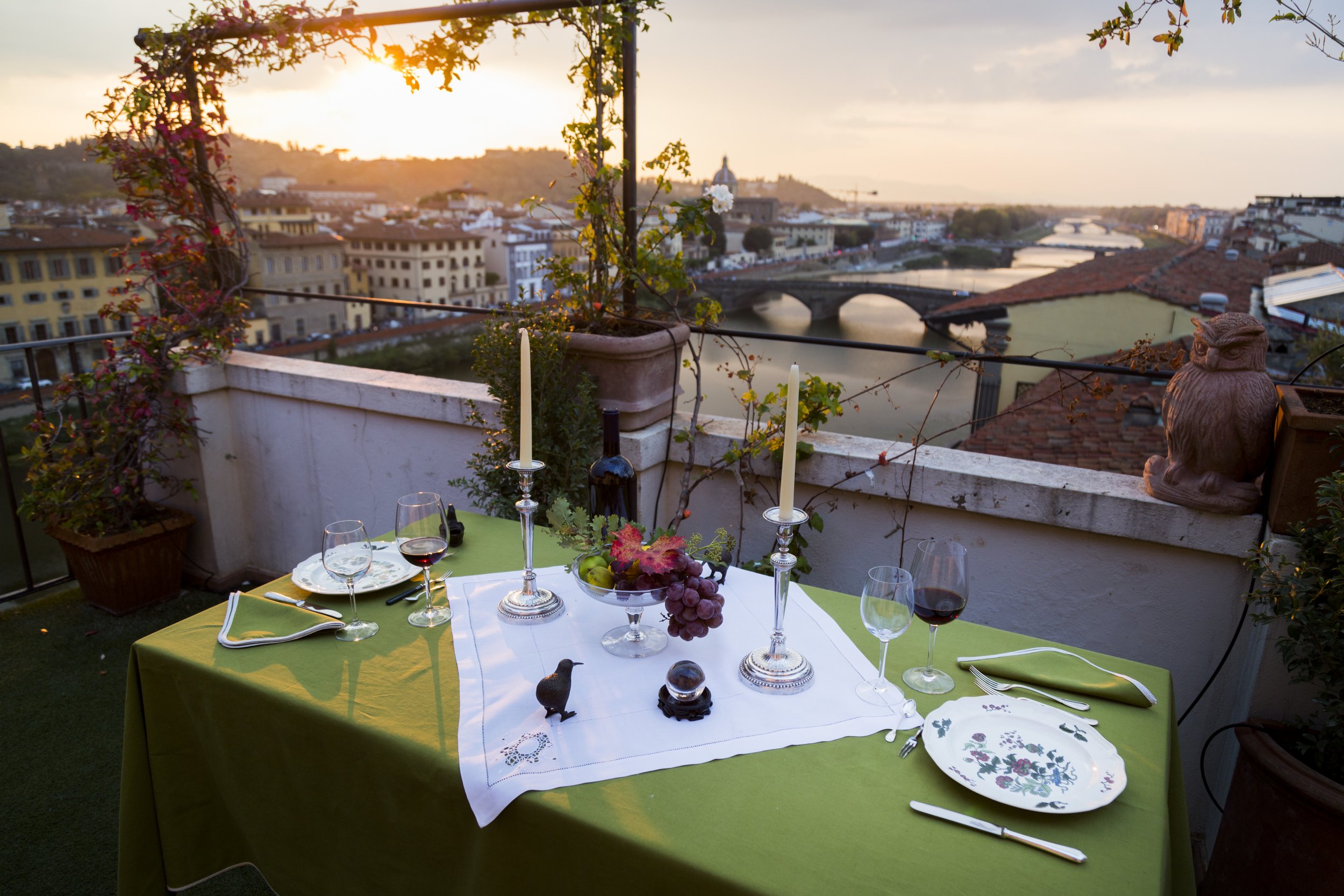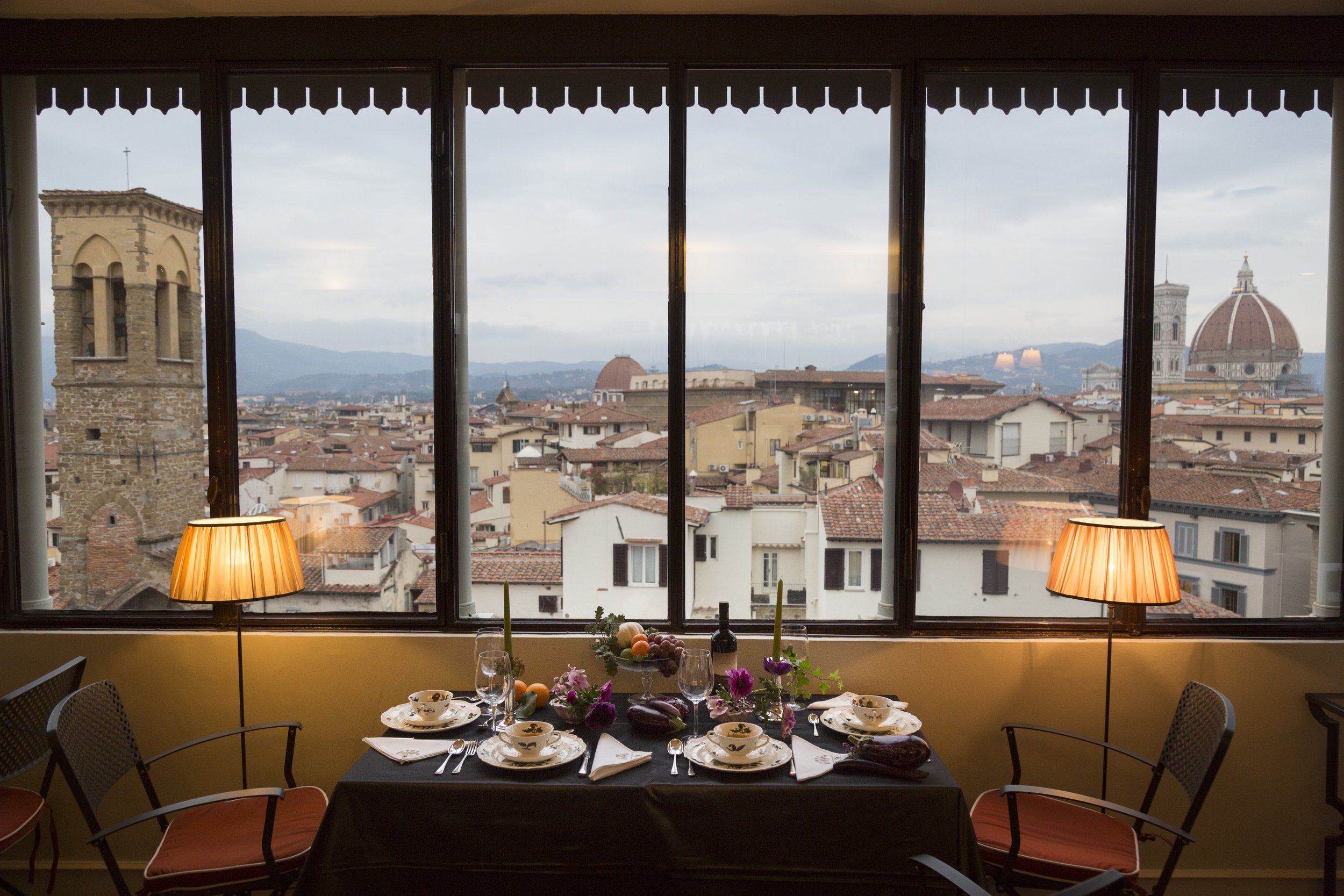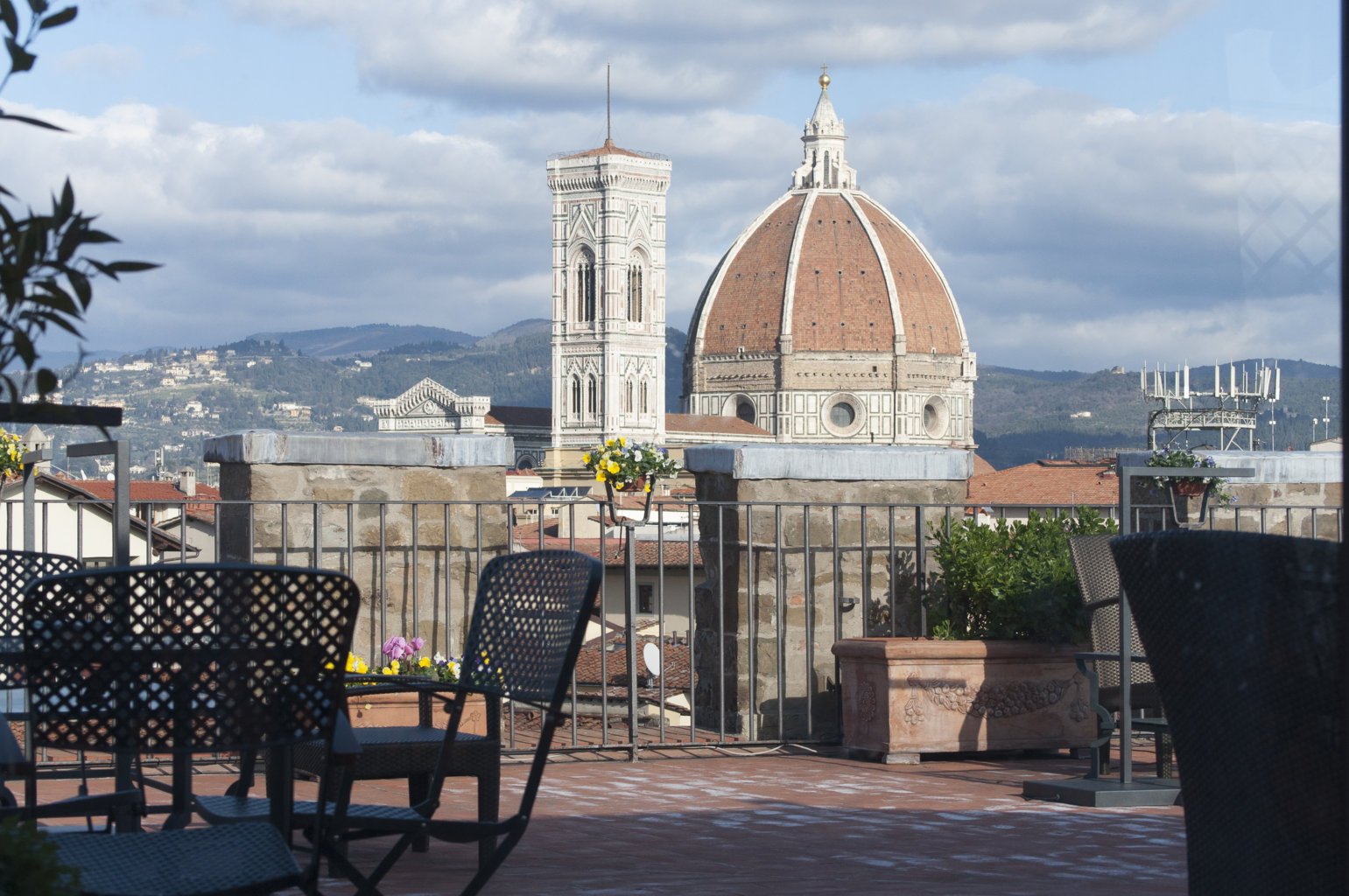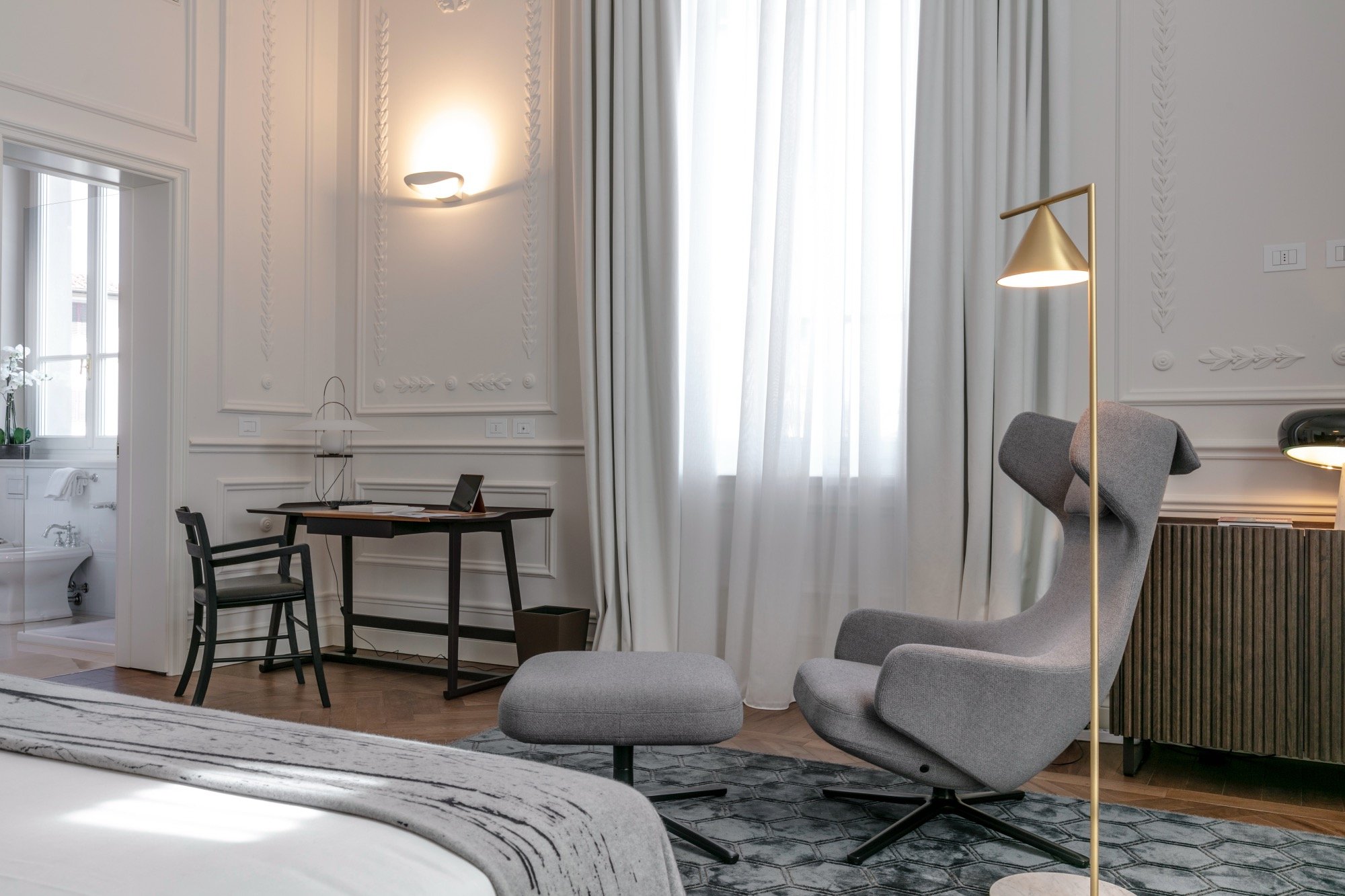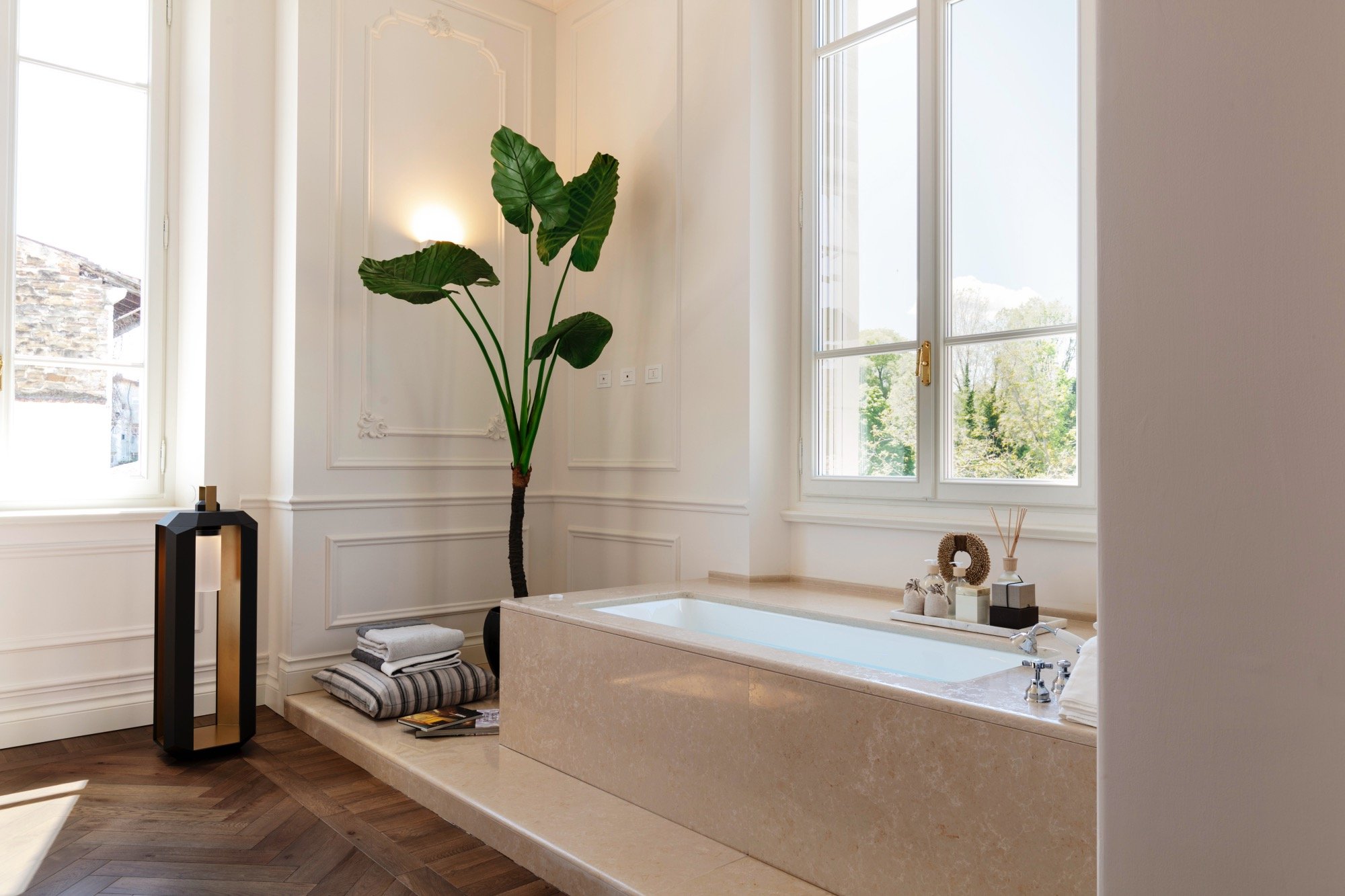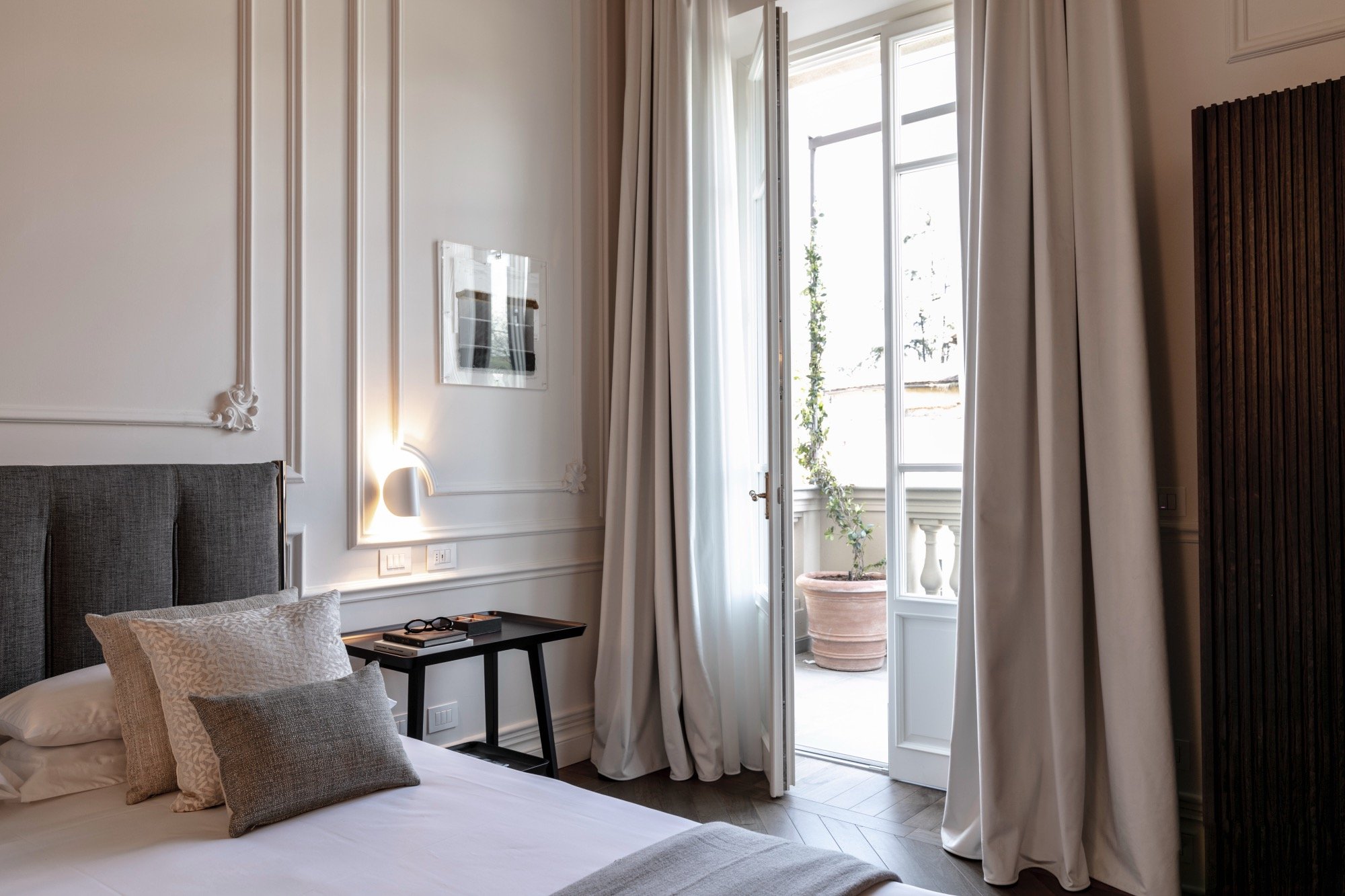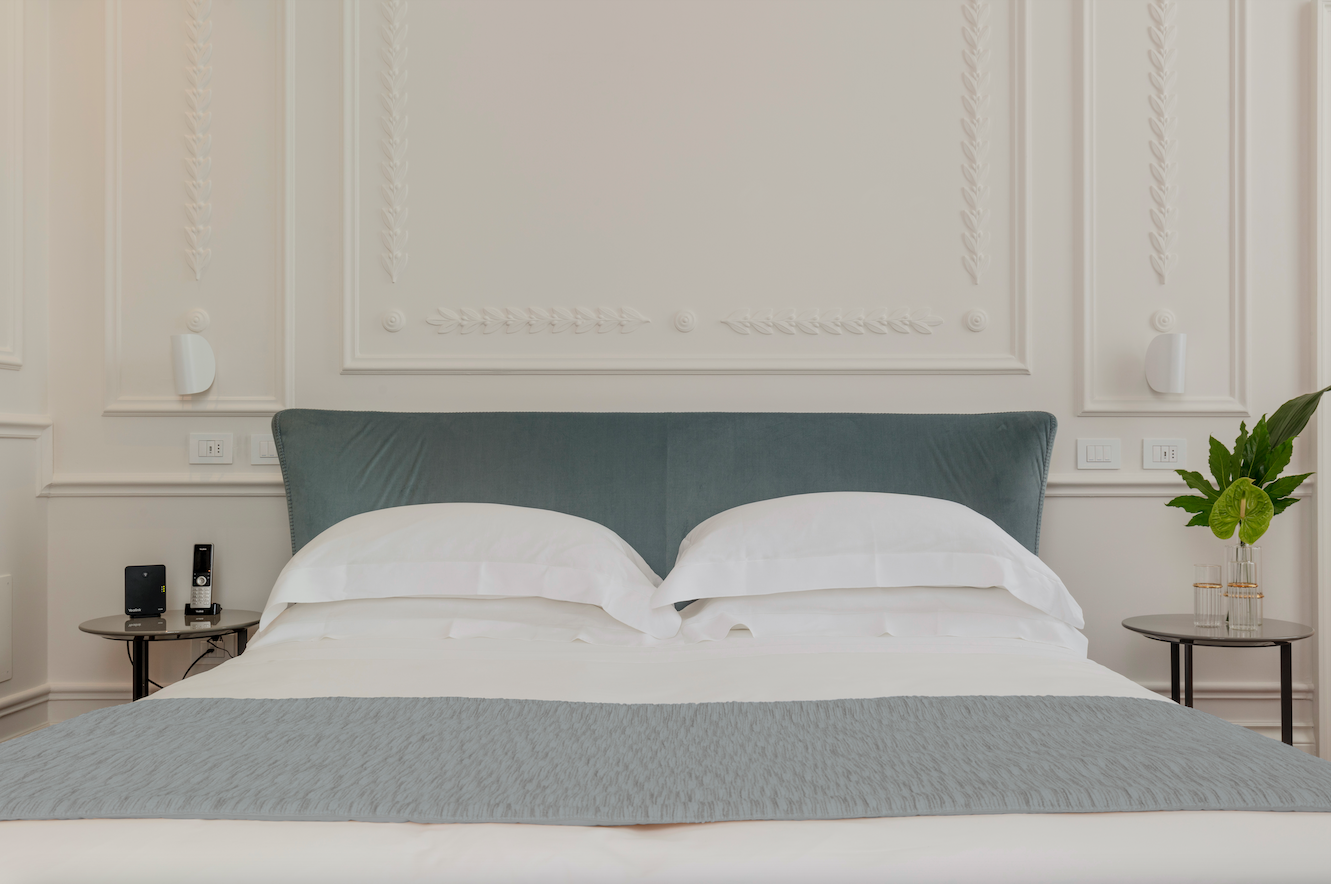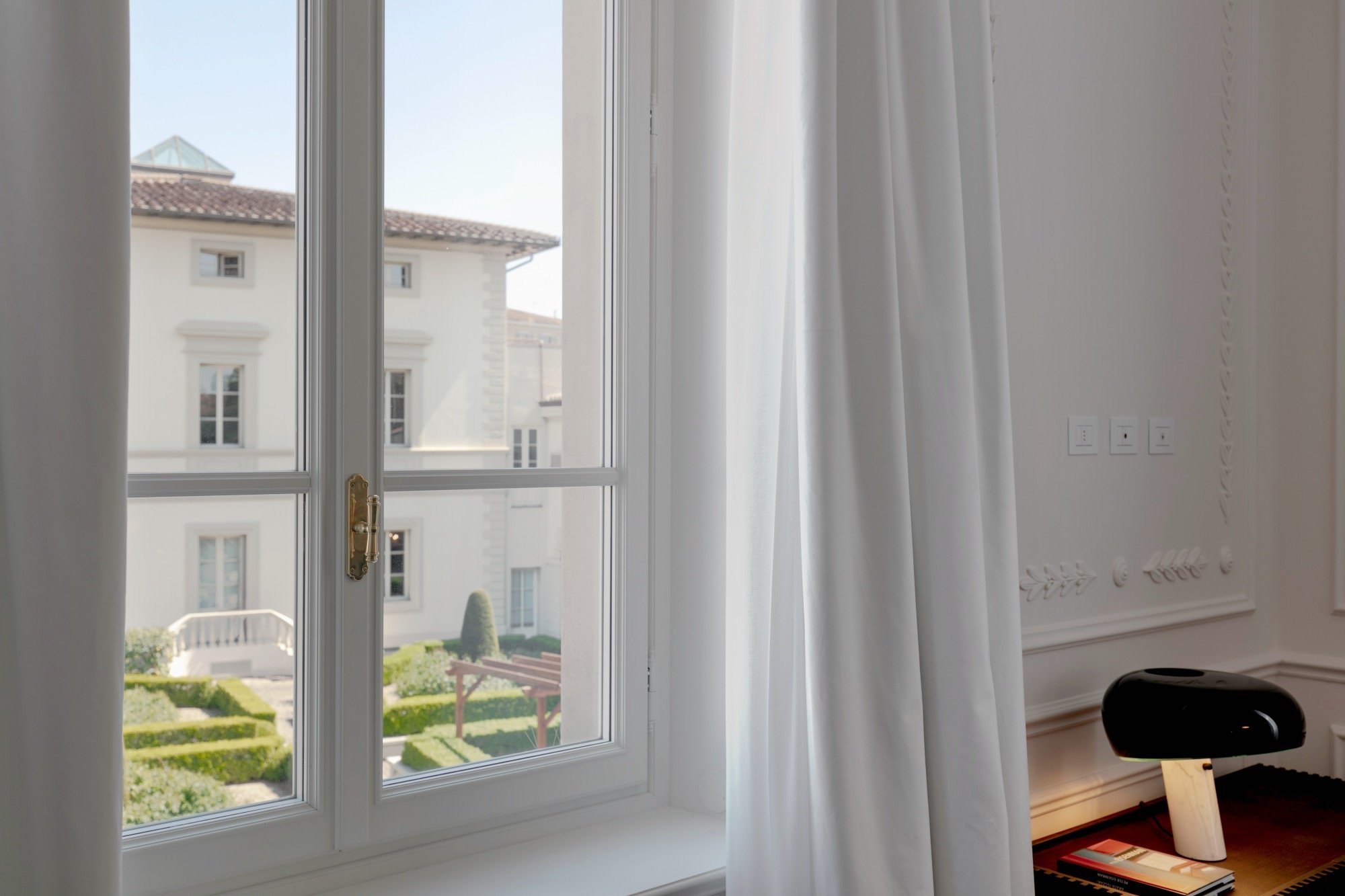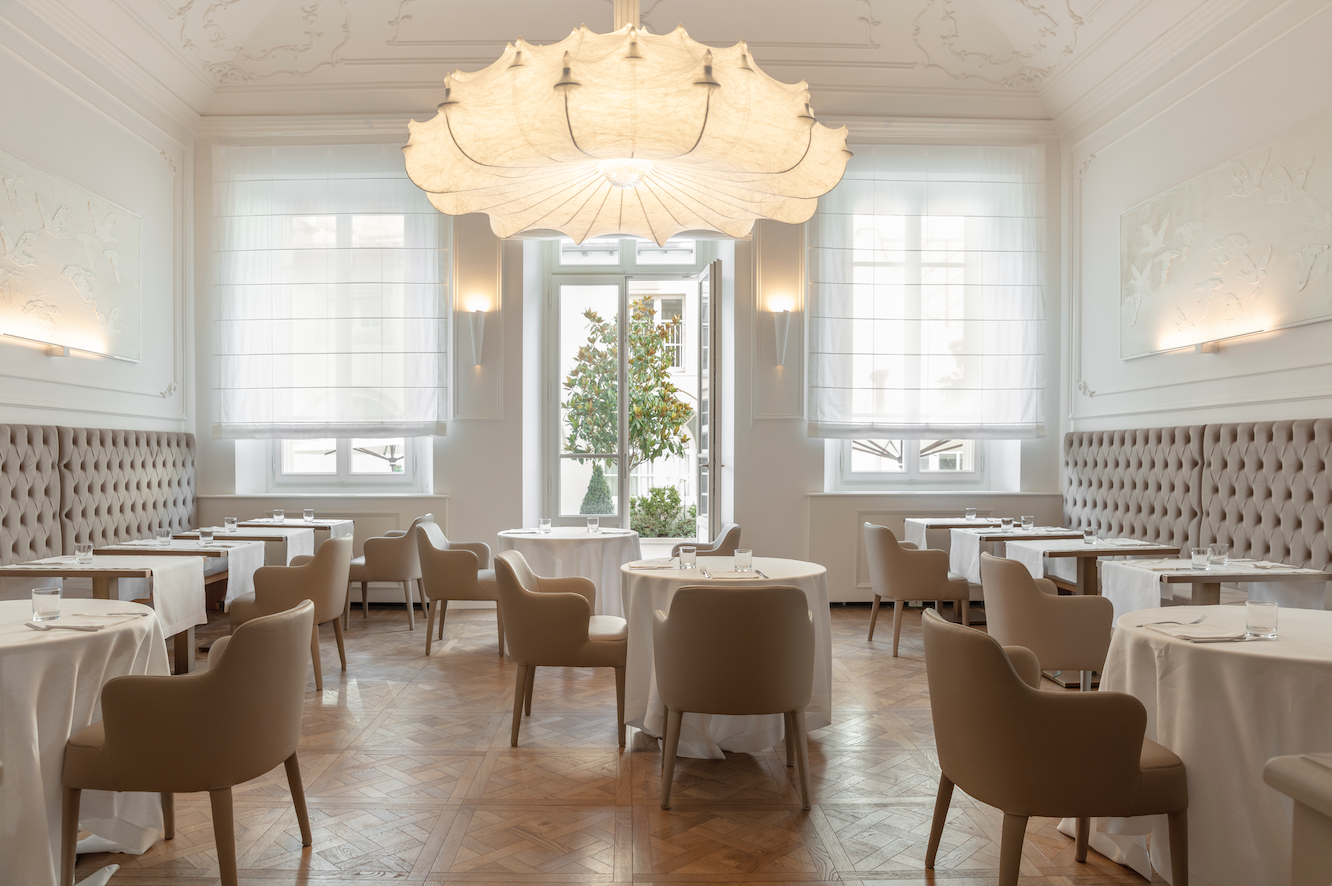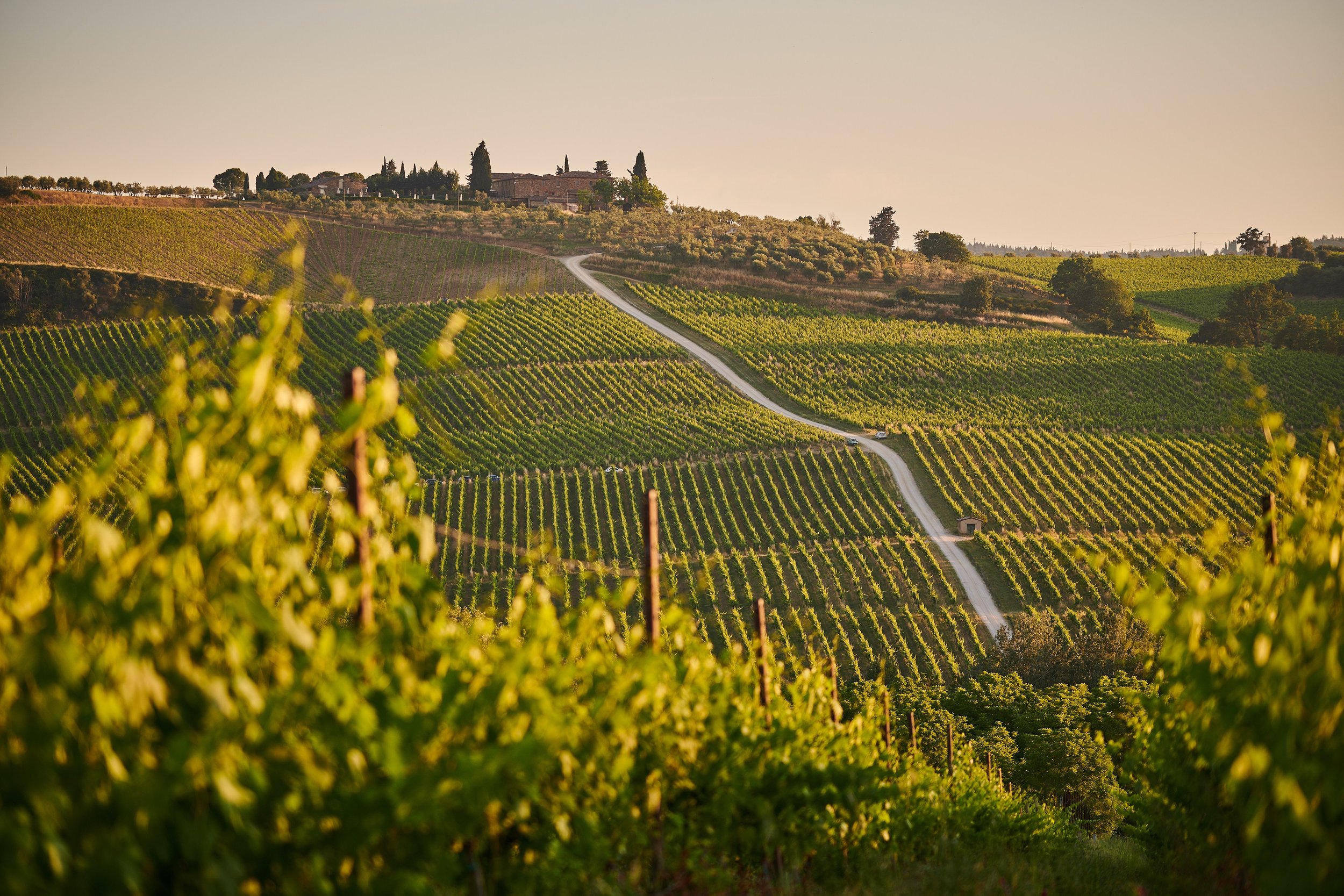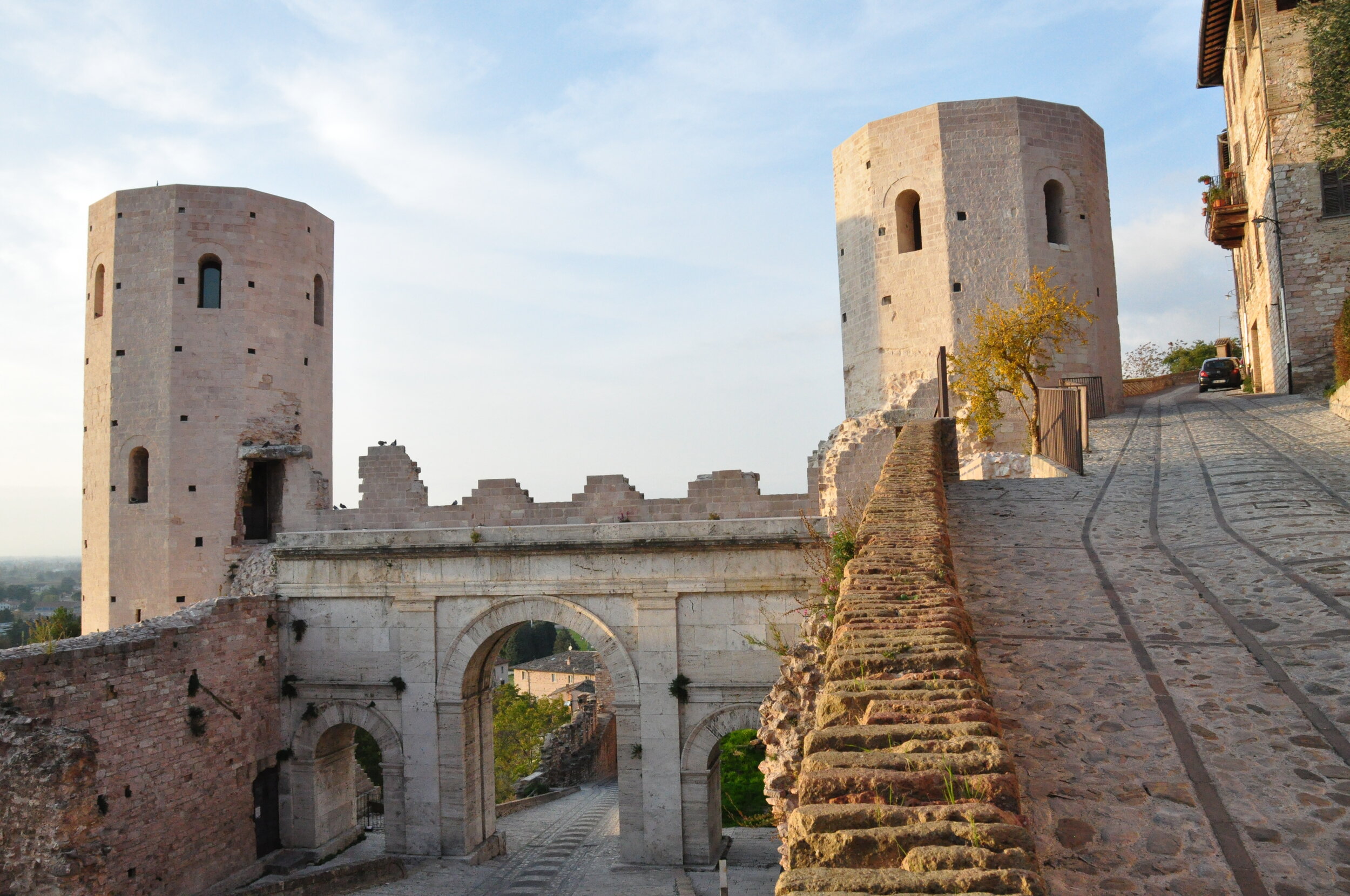Get to know the Italian Cultural Capital for 2022, Procida, an unassuming fishermen island that has kept a low profile compared to nearby islands Ischia and Capri. The world’s eyes will be on her this year as Italy officially celebrates the cultural capital title on April 9th, 2022 with all day festivities starting from the mainland (Naples) to the island. Custom Tour Designer and author of the region, Rita Covello, gives us a glimpse inside this unique island of volcanic origin.
World Cups, Couture and Cuisine
HISTORY, ART & HOSPITALITY IN FLORENCE
from medieval to risorgimento, spotlight on two luxury hotels with a rich past
MEDIEVAL
L’ANTICA TORRE, VIA DE’ TORNABUONI No. 1
Situated on the street named after the surname of Lorenzo il Magnifico’s mother, Lucrezia, the medieval tower was built in the mid-13th century by the Guelf Ruggerini family. Over the centuries, there have been a variety of owners, however, the tower remained in the Gianfigliazzi family for several generations and is mentioned in the 17th Canto of Dante’s Inferno about the “Usurers”:
And when, amongst them, looking round I came,
A yellow purse 3 I saw with azure wrought,
That wore a lion’s countenance and port.
FOUNDING FATHER & FERRAGAMO
The plaque that cites the tower’s reference in The Divine Comedy sits to the right of the entrance paying tribute to the founding father of the Italian language. Fashionistas who step on to via Tornabuoni may not even notice the epigraph as they may quickly get distracted by the illustrious high-end Ferragamo boutique right across the street. Large windows display both the latest styles and iconic shoe designs by Salvatore Ferragamo. The street is chockful of luxury brands to the left and Santa Maria Trinita’ Piazza to the right.
In its current reincarnation, this historic mansion owned by a family for centuries, boasts exceptional design, breathtaking views of the city, sumptuous furnishings and Tuscan culinary fare at its best. “The Antica Torre Tornabuoni was born in 2001,” says general manager, Maria Rita Bellini. “The family decided it was time to open the doors to travellers as had been done in the past. One of their ancestors even welcomed guests of The Grand Tour in the mansion that was once a tower house.”
THE DESIGN INSPIRATION
Designer Angelica Frescobaldi worked closely with the family to execute the vision of the hotel, which combines time-honoured craftsmanship with modernity. “The Tuscan Renaissance tradition is handed down and reinvented,” according to Bellini, noting everything from the classic art and original architecture to the hand-painted walls with vibrant notes of colour. The colour palette of green, brick red and pale pink was inspired by great painters like Ghirlandaio. “Any furniture that doesn’t come from the family or ancestors has been custom-made with an exclusive design which promises the style will not be repeated elsewhere.” Richly hued textiles and rugs complement the wood floors. Silk linen drapes line the tall windows, which bathe the rooms with natural light. “Each room is different, and every time you open the door, it is as if a Tuscan treasure chest opens,” exclaims Bellini. “Some rooms have high ceilings, while others tell the story of roof terraces and beams offering a more intimate atmosphere.” The rooms at the front offer spectacular views of the Arno River.
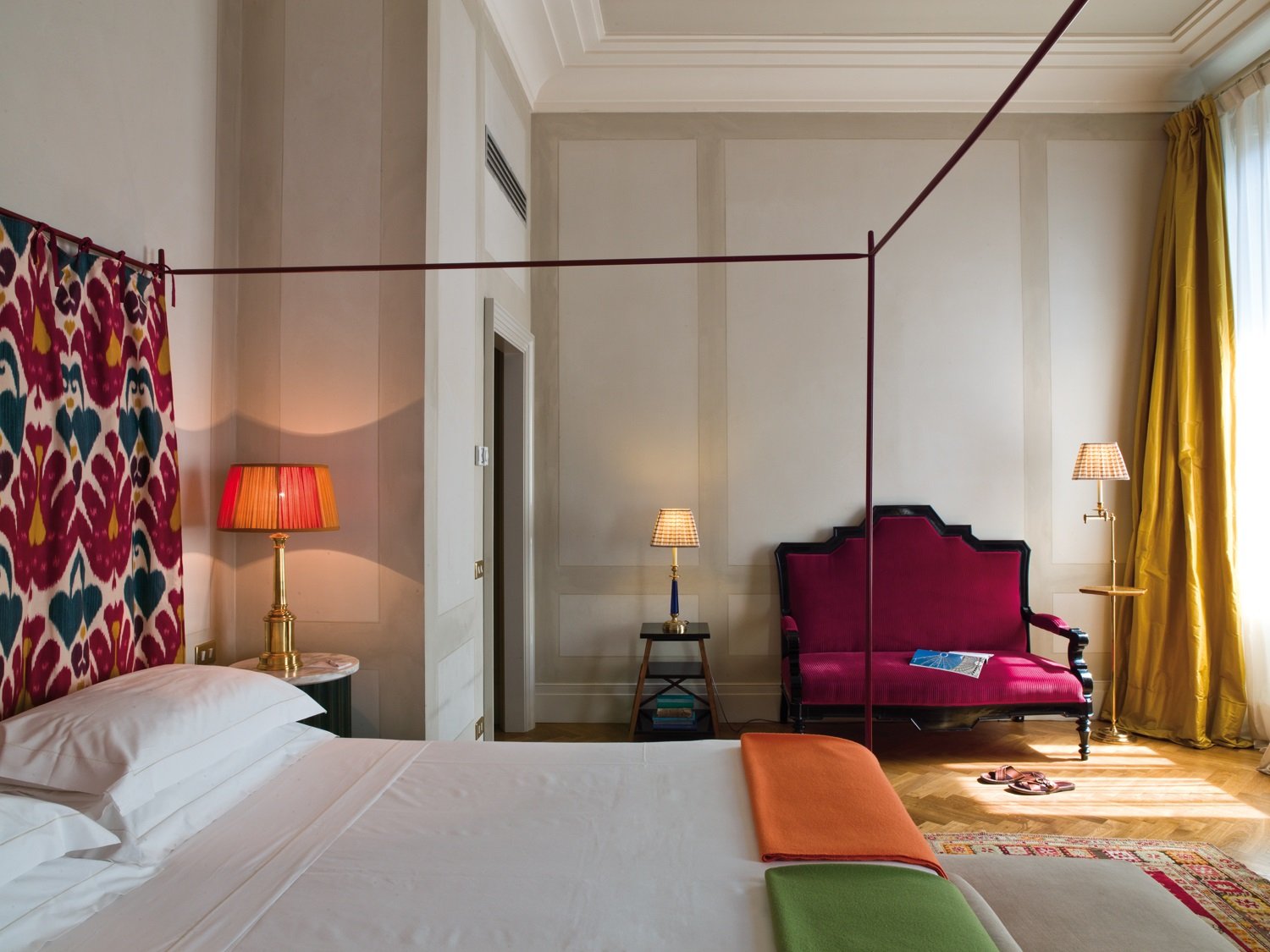
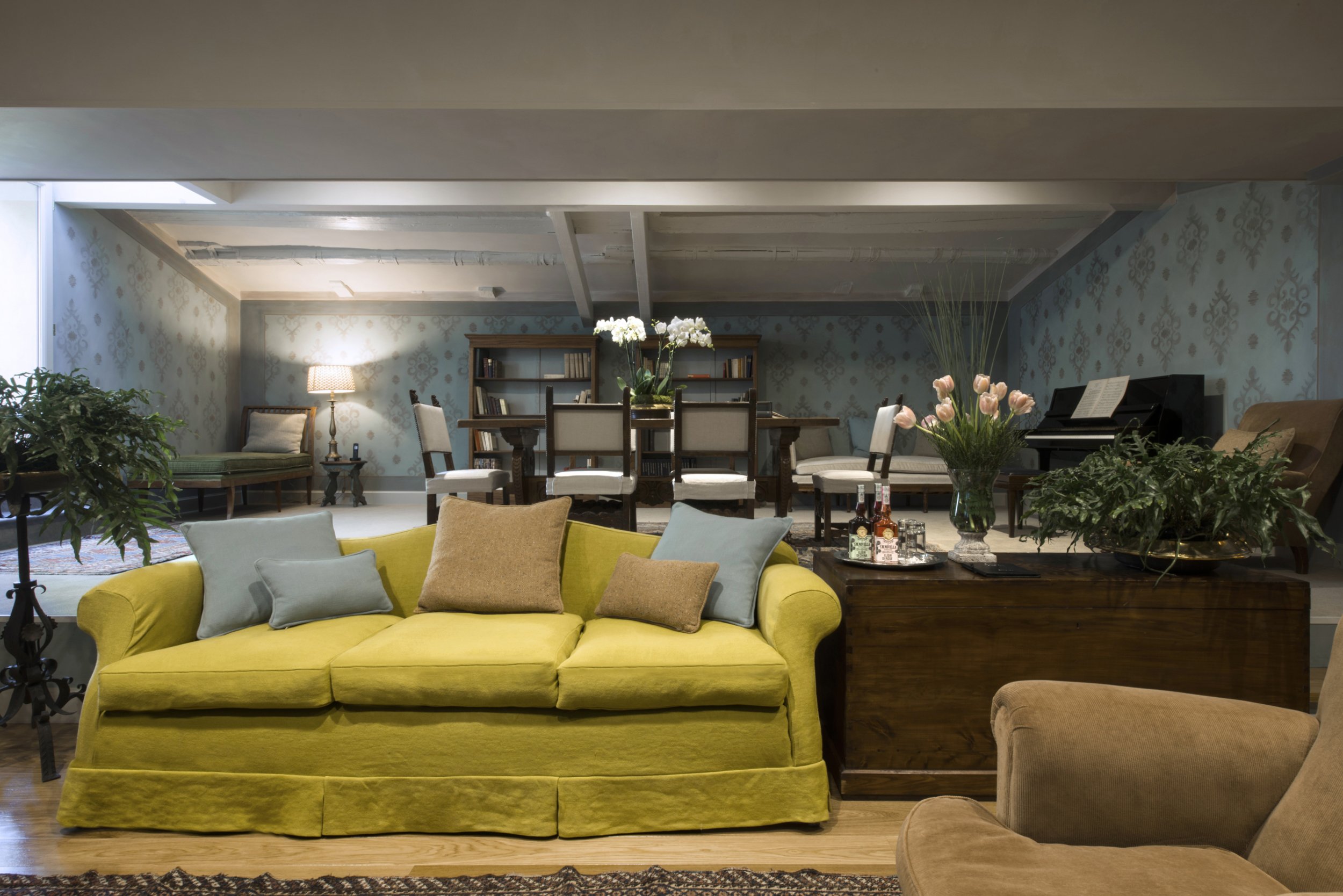
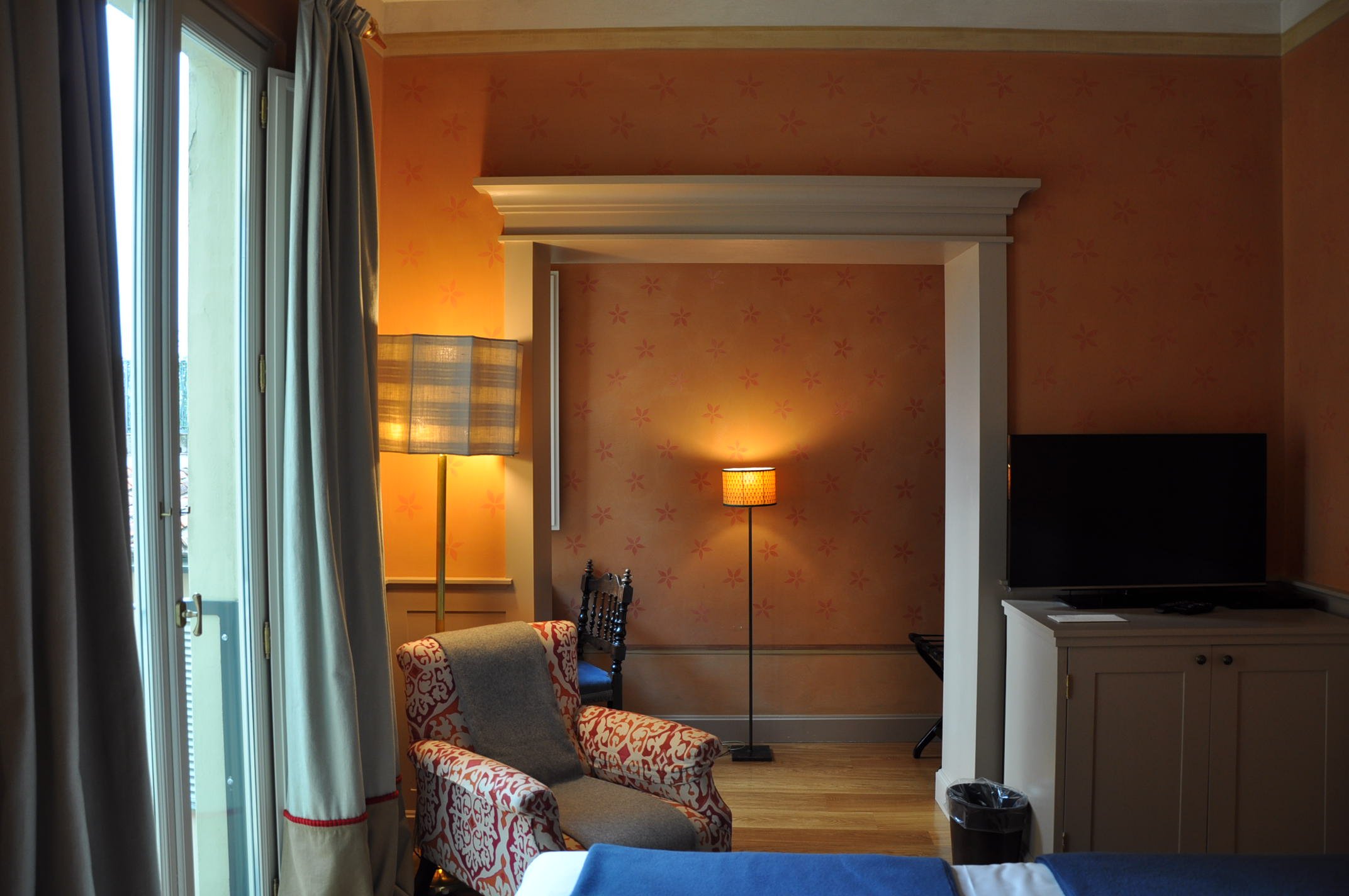

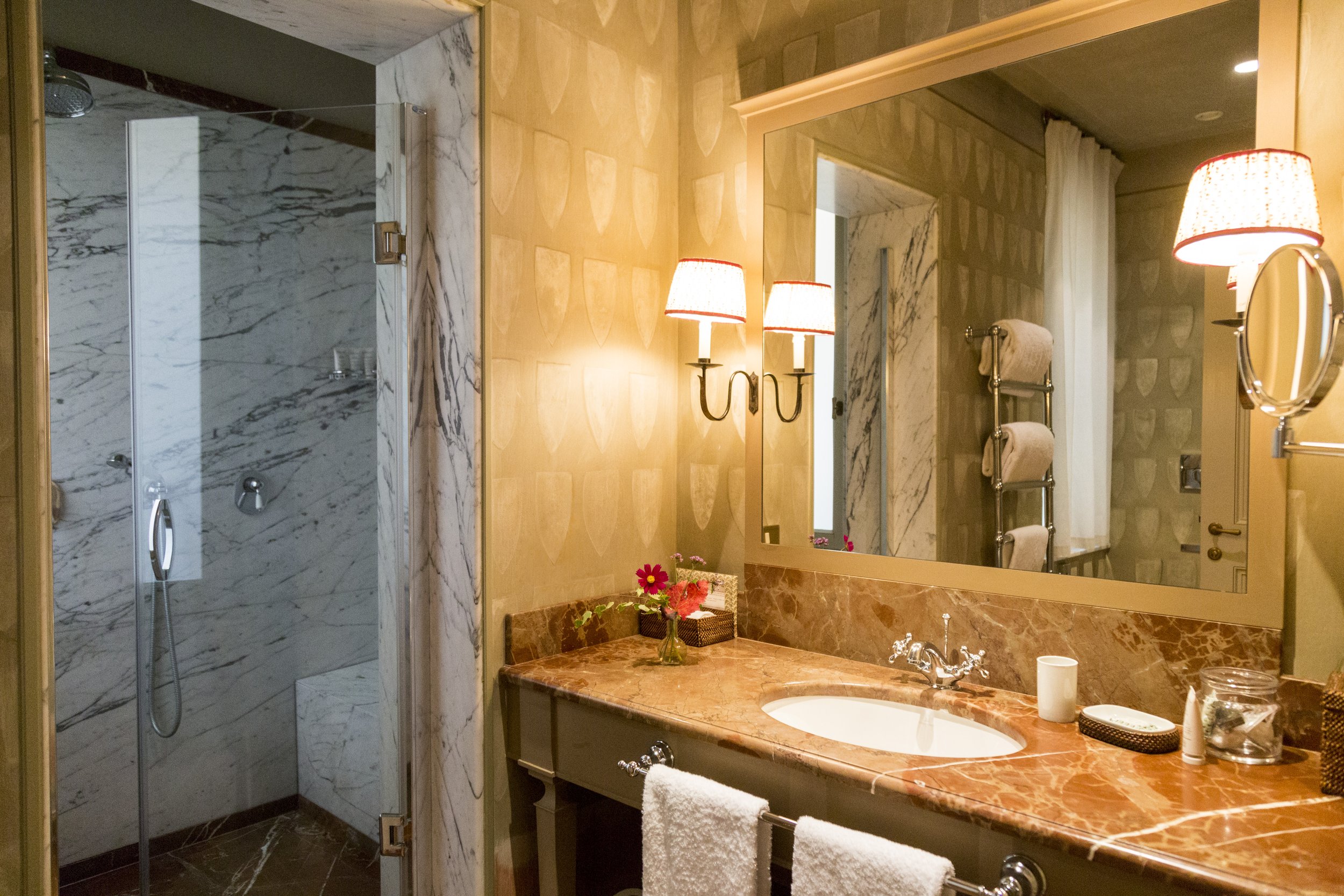
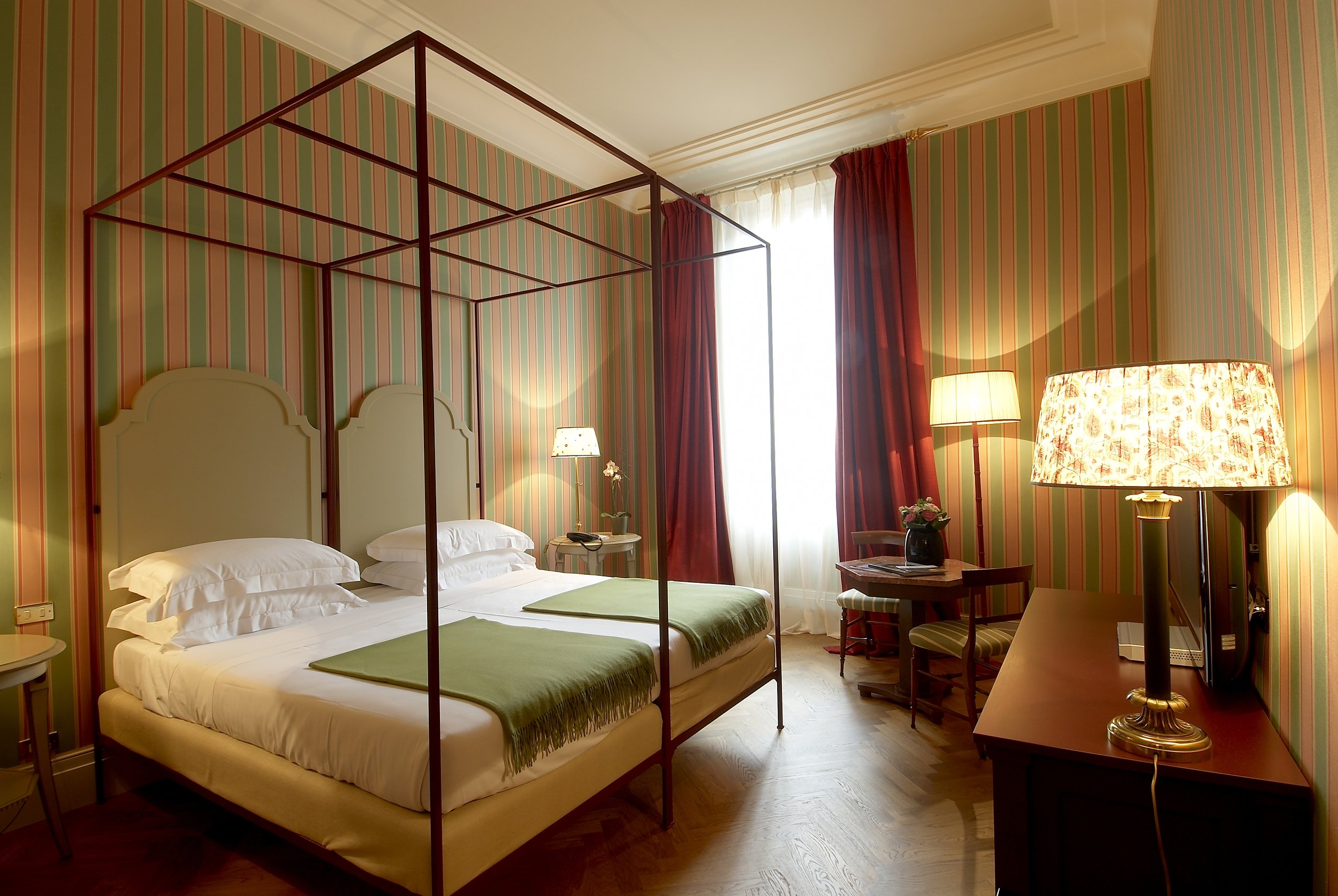

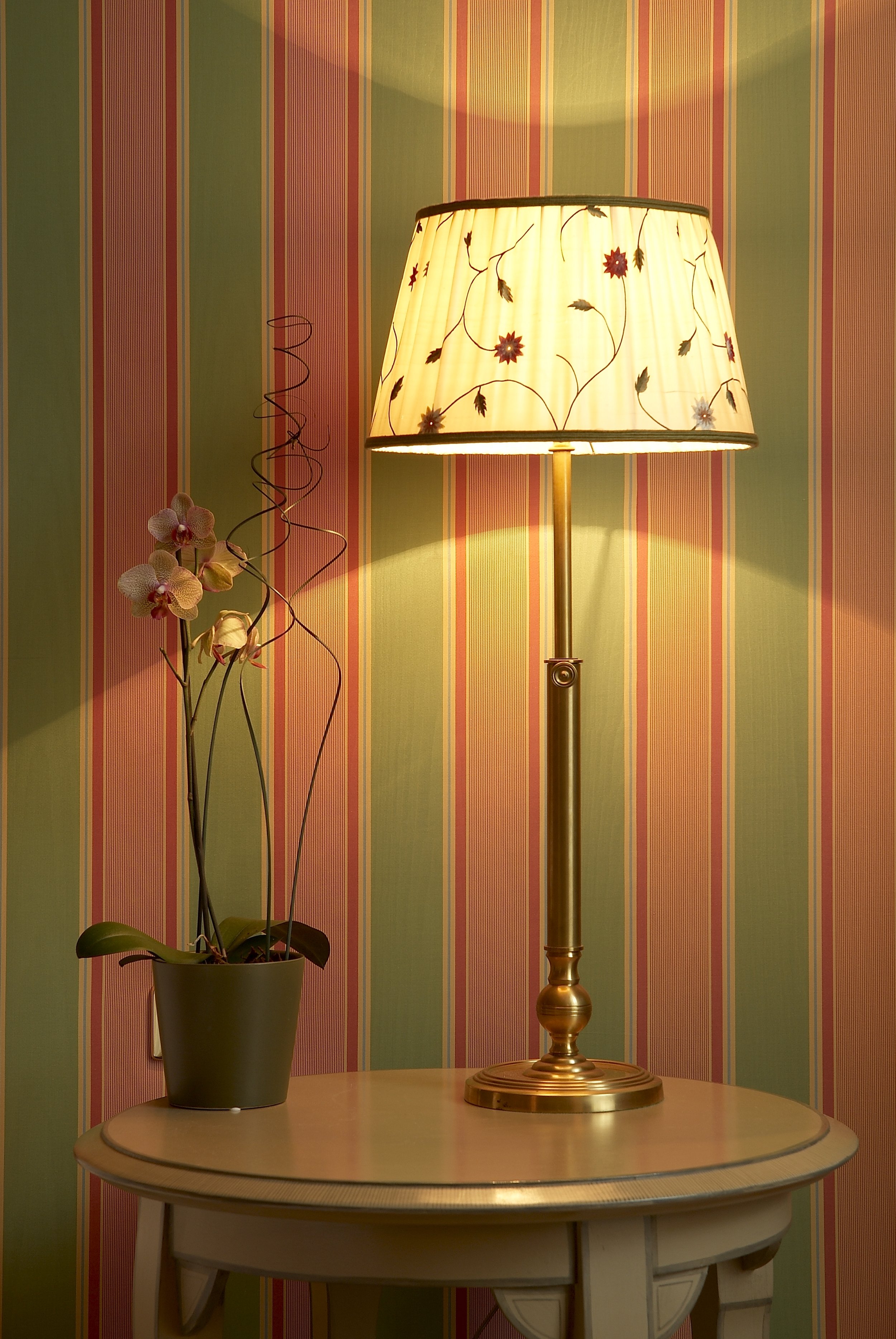
Bathrooms are quite spacious and finished in Italian marble. After a day of walking, visiting museums, shopping and enjoying long Tuscan meals and the finest red wines I have ever tasted, it is a treat to return to your suite complete with organic skincare and bathroom products where you can rest and refresh for your next outing. Or, you can choose to stay in.
BREATHTAKING VIEWS & ART HISTORY
The Antica Torre has some of the most exceptional views of the city where you can take advantage of the two private, guests-only rooftop terraces and take in the stunning cityscape of the Dome of Santa Maria del Fiore, the hills of Fiesole, the Arno River, Palazzo Vecchio and more. The panoramic rooftop bar is an ideal place to relax and catch a Florentine sunset over the city while sipping the hotel’s signature Sunset cocktail, created by an in-house mixologist. You can also partake in an Italian cocktail lesson and learn how to make your own Negroni or Spritz—perfect for an Italian aperitivo ritual you can enjoy at home.
If you want an in-depth and comprehensive private tour of iconic sites around Florence unveiling its rich history, art and culture, the hotel works closely with some of the city’s most knowledgeable and respected city guides. An hour-long tour from L’Antica Torre to Santa Maria Novella Basilica lasted two hours as our passionate and knowledgeable guide Lucia Montuschi, founder of Exclusive Connection, shared her love and profound insights of the city she proudly calls home.
A stay at L’Antica Torre Tornabuoni often turns guests into return customers. It is no wonder the hotel once again made the Condé Nast 2021 Readers’ Choice Awards Top 10 Places to Stay in Florence List. “I fell in love with this Tower 13 years ago, a long love affair,” declares Bellini. And she is excited about the new developments slated for next year, which include the relaunch of the restaurant next April with a new menu and chef, as well as a Walking Tour of Florence at sunrise when the city is just waking up.
If you have Florence in your travel plans in 2022, book a few nights here and be prepared to be dazzled by the beautiful blend of Renaissance art and high-end hospitality, where guests enjoy a sense of timeless elegance set against a magnificent backdrop of Italian architecture and mesmerizing vistas.
RISORGIMENTO
DIMORA PALANCA, VIA DELLA SCALA 72
Joining the five-star luxury accommodation roster just this August is an exceptional 19th century villa recently restored in the heart of Florence. Ideal for people who wish to explore the city on foot, the Dimora Palanca is a five-minute walk from the Santa Maria Novella train station and main tram line that connects the city. Flanked by elegant villas and many of Florence’s major landmarks such as the Galleria dell’Accademia and Palazzo Pitti, this property has its own unique story that was honoured, reinterpreted and elevated for art aficionados seeking modern 21st century comforts amidst sleek interiors and punctuated with artfully curated spaces that soothe the soul after a day of sight-seeing.
A LITTLE HISTORY
The location is where the original city walls once stood. Once they were destroyed between 1865 and 1871, wealthy Tuscans and Italians began to construct villas along this strip. “The noble Palanca family from Orbetello in the province of Grossetto were the original property owners, and the villa was designed by architect Giuseppe Poggi,” says Sharon Kilby, creative director of Arthouse PR.
The Palanca family were avid supporters of the arts and, subsequently, the Dimora Palanca became known as a private gallery of sorts and as a hub of artistic activity and social gatherings. This connection to the art world was an important historical aspect to relay in the current design so, seasoned historic renovation collaborators, architect Stefano Viviani and artist Paolo Dovichi worked rigorously to pay tribute to the arts in the restoration. “Within the villa, the original architectural elements have been beautifully restored with many rooms featuring exquisite frescoes and intricate stuccoes. Architect Stefano Viviani has successfully created a modern reflection of Dimora Palanca’s original character,” attests Kilby.
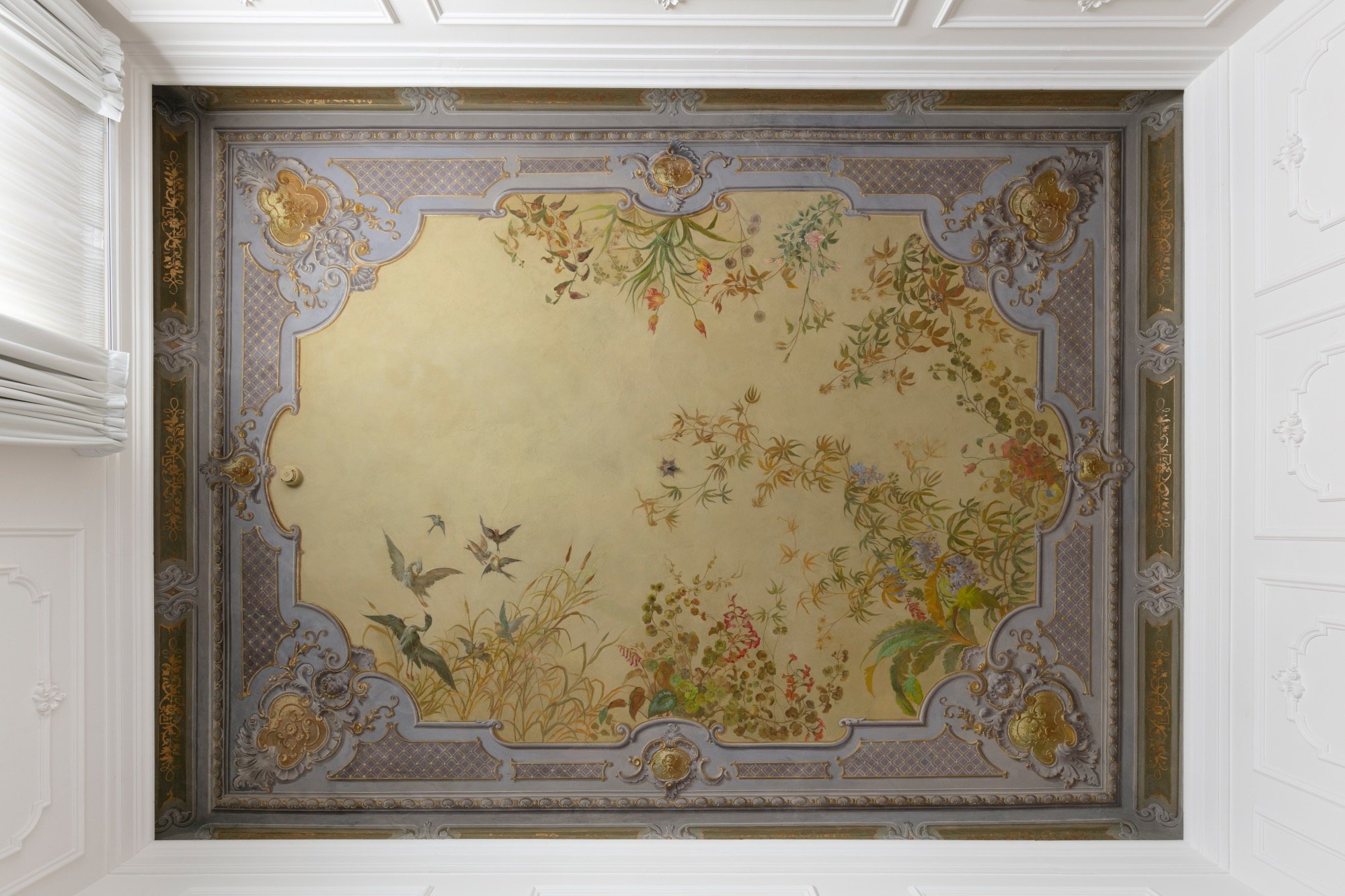
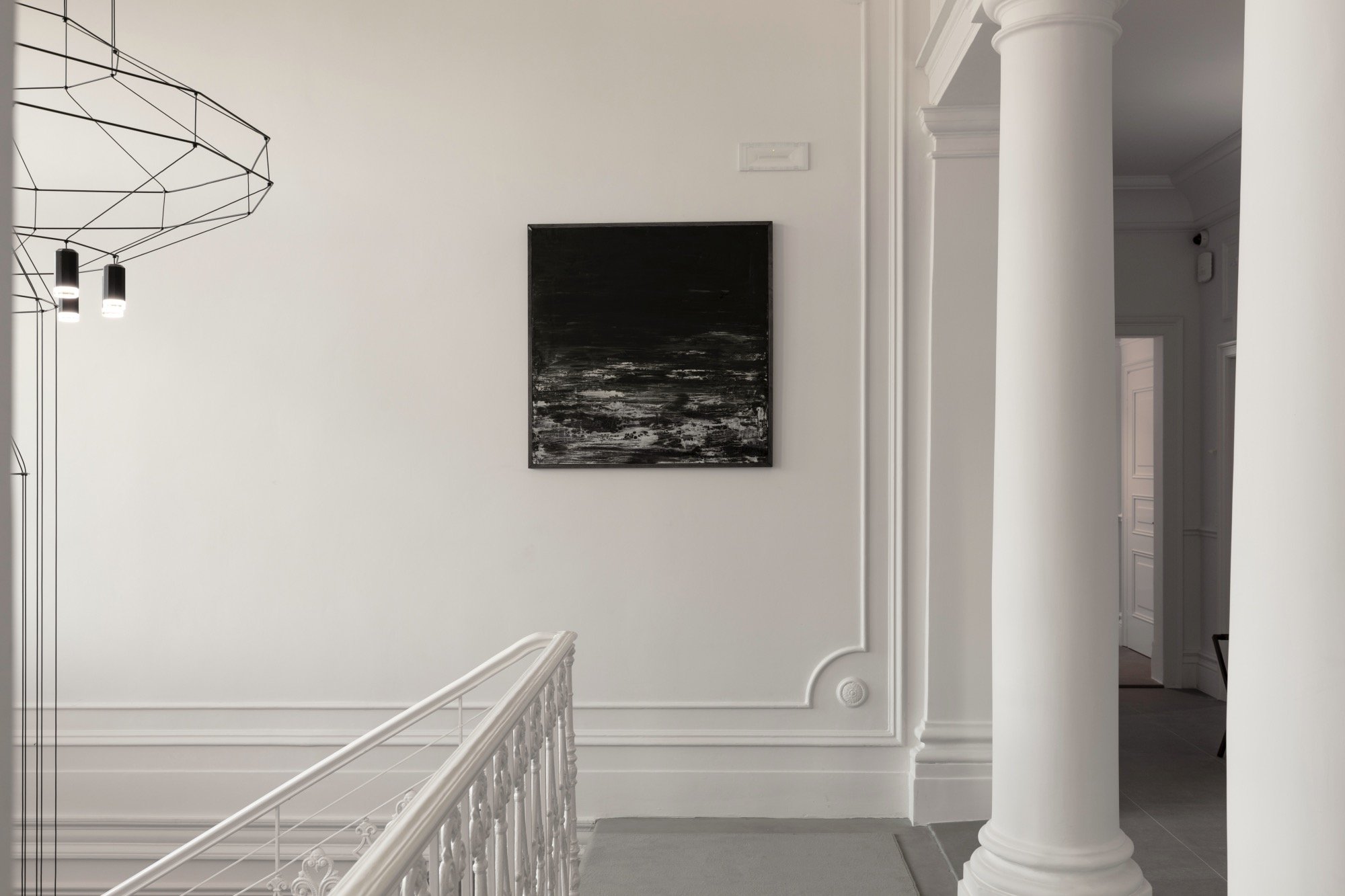
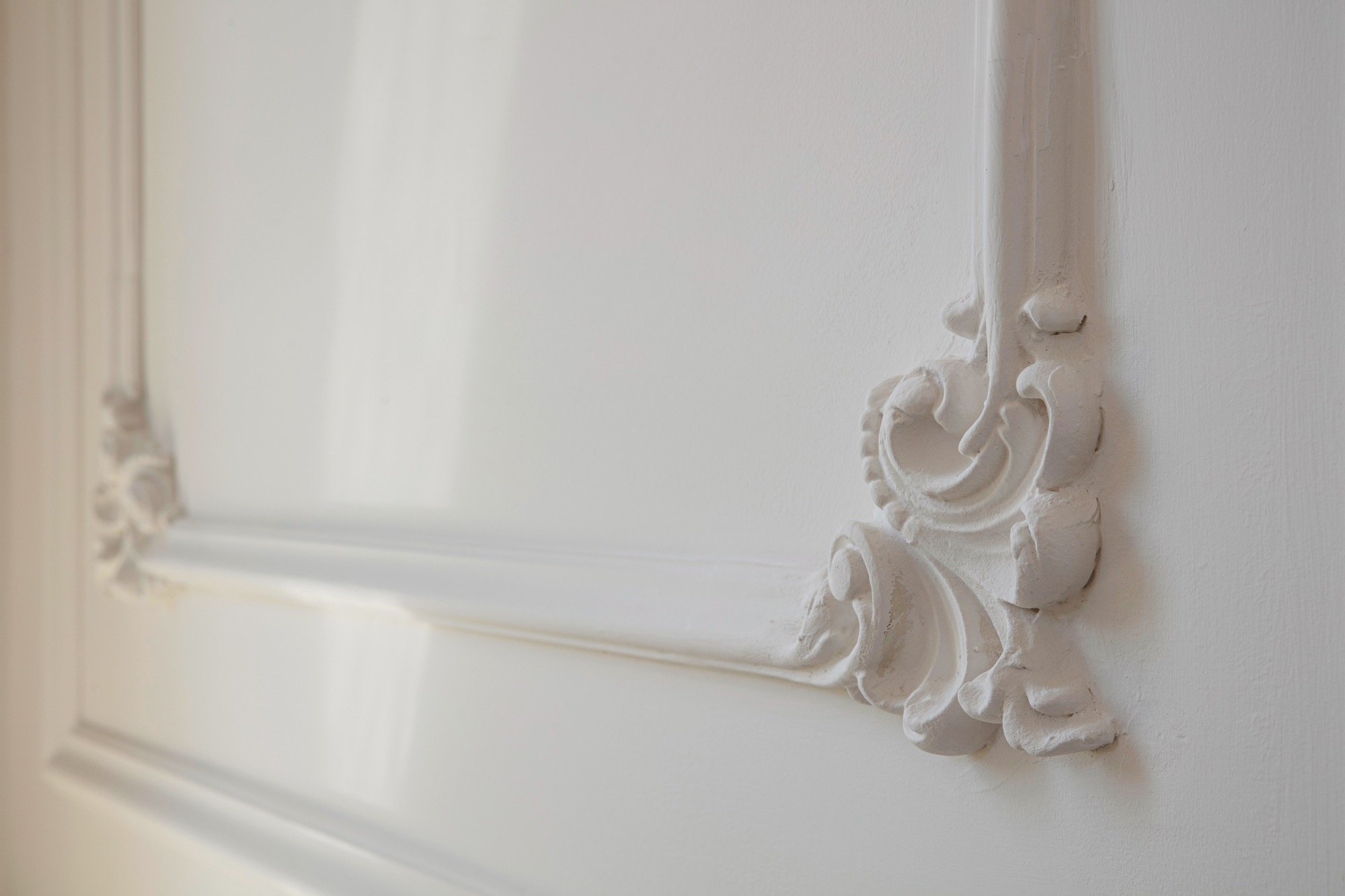
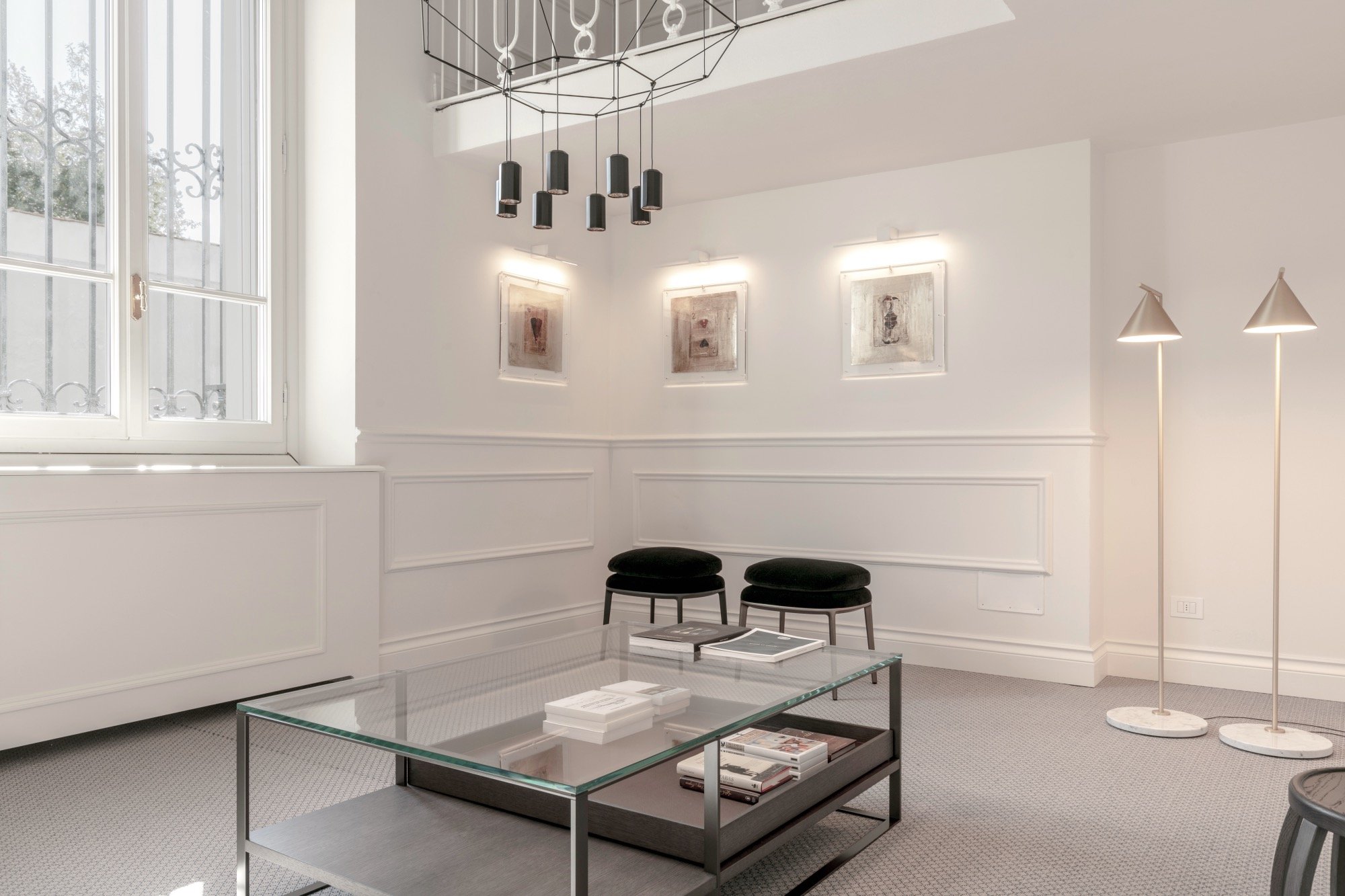
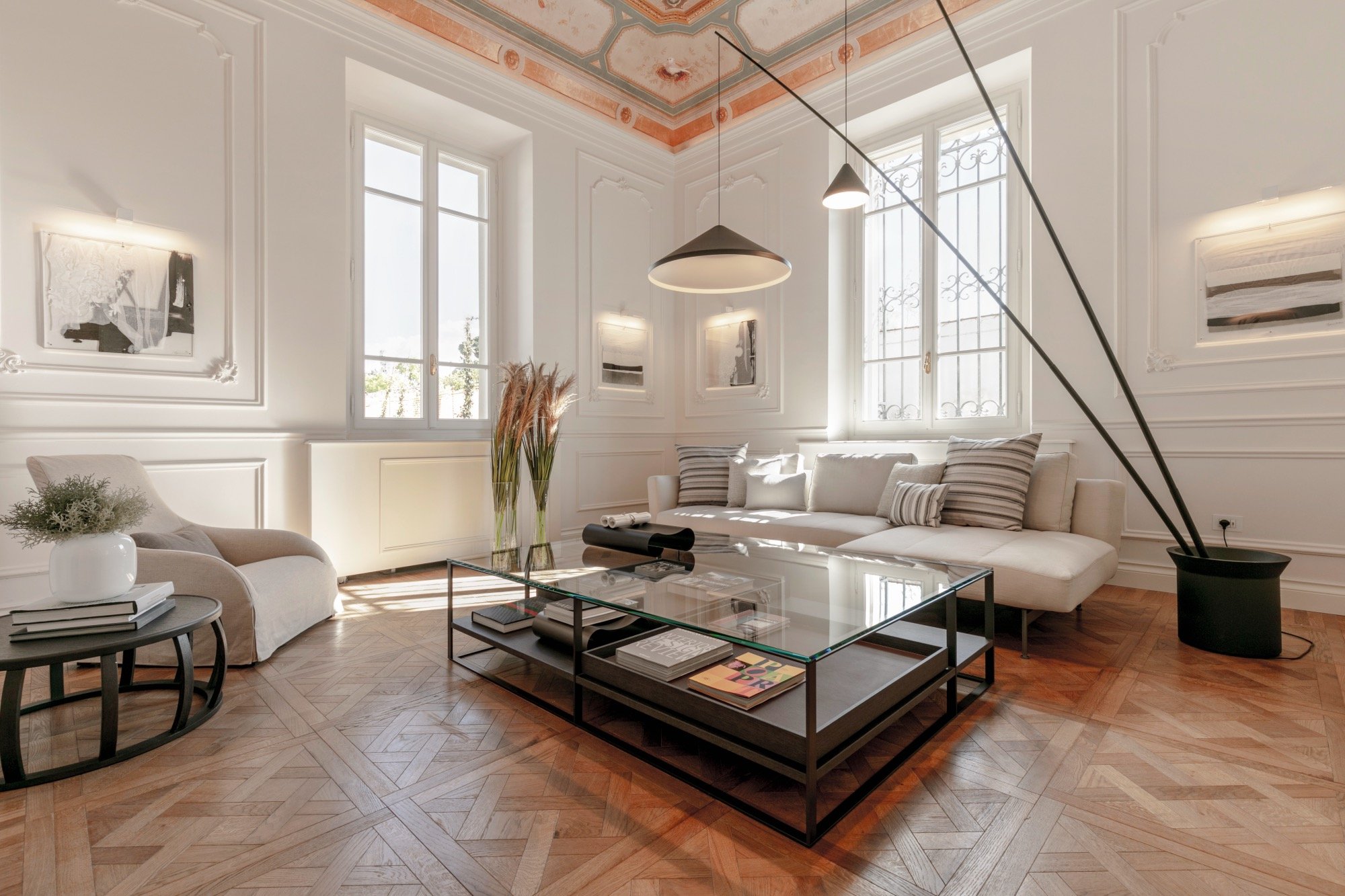
SLEEK & CHIC
The four-floor, 18-suite art hotel hosts a collection of over 50 pieces of contemporary art by the Tuscan artist Dovichi. Inspired by the four elements of earth, water, fire and air, he uses bespoke fabrics like velvet, silk and linen and places them in plexiglass plates on display throughout the property. All common rooms have a theme that is illustrated in the restored frescoes; you just have to look up and discover the original purpose of that particular room. Beyond the art, the interiors are a celebration of modern form and function while seamlessly paying homage to classic 19th century Florentine design features as seen in the millwork, the high ceilings and the natural wood floors in a herringbone pattern. Dark wood panelling contrasts the soothing natural colour palette of cream, white and grey with touches of graphite and charcoal. En-suite bathrooms are spacious and opulent with chromotherapy showers, and the organic bath products made by an artisan Florentine perfumery are a welcome luxury with which to start your day.
EAT, DRINK, SLEEP IN STYLE
The Simmons mattresses and soundproof suites are conducive to a heavenly night of restful sleep despite being in the centre of Florence. The pièce de résistance personally for me is the secret garden which is set between the villa and the original orangery. Considering Dimora Palanca’s central location, I was amazed it also offers this peaceful, private oasis, a tranquil setting where you can enjoy pre-dinner drinks, a light lunch or your morning coffee.
Other common areas include: a chic library, spacious lounge, a bar and morning room. Walking around the hotel, my head kept bobbing from floor to ceiling as I was awestruck at every turn, from the ornate patterned parquet floors to the statement light fixtures that crowned each space. Fans of fine dining will enjoy the surprising and delectable tastings of innovative, Michelin-starred chef Giovanni Cerroni and his team at the Memesi Restaurant, located in the villa’s original kitchen. Cerroni’s unique philosophy honours traditional cuisine with a fresh energy and visionary touch.
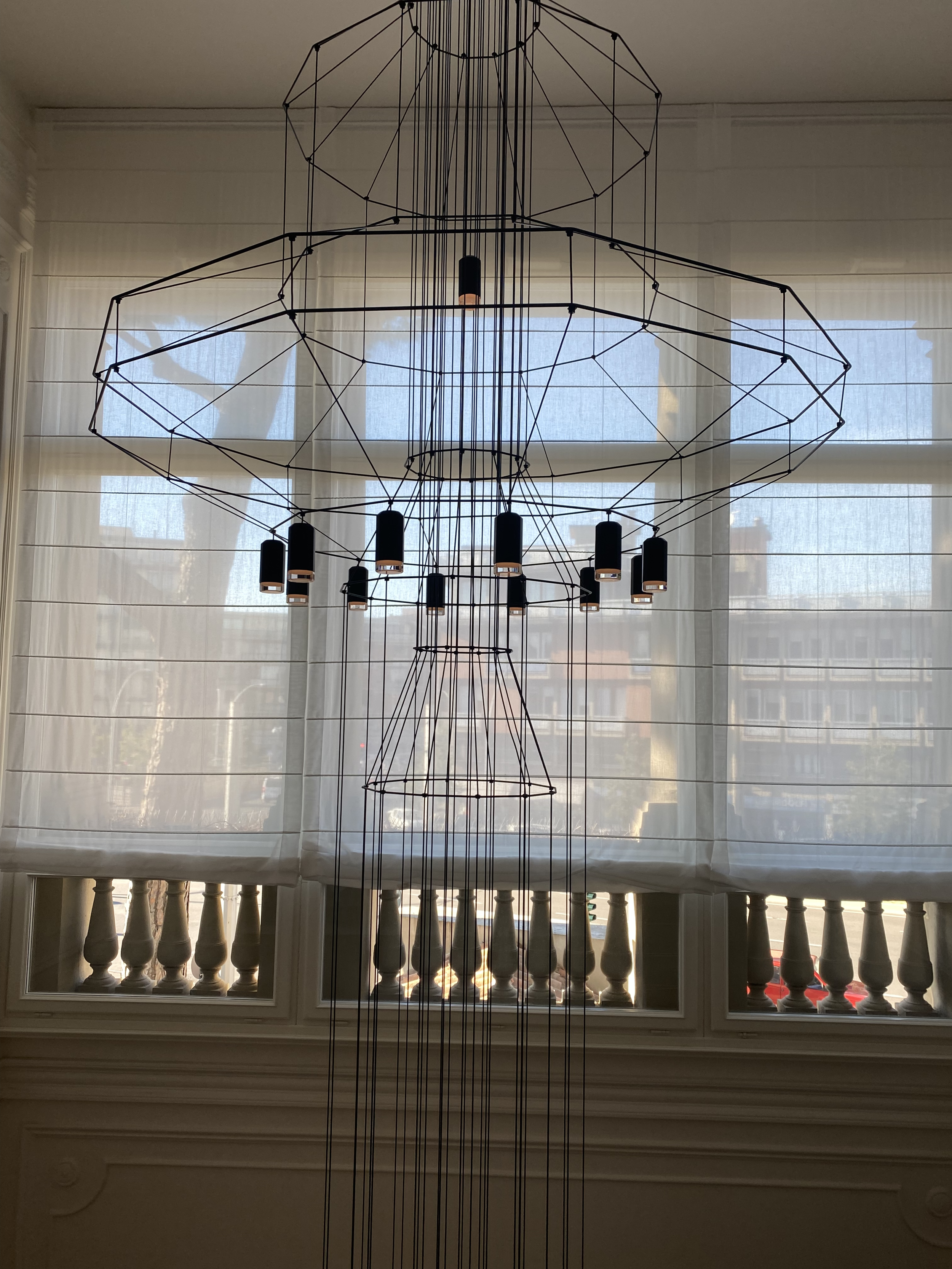
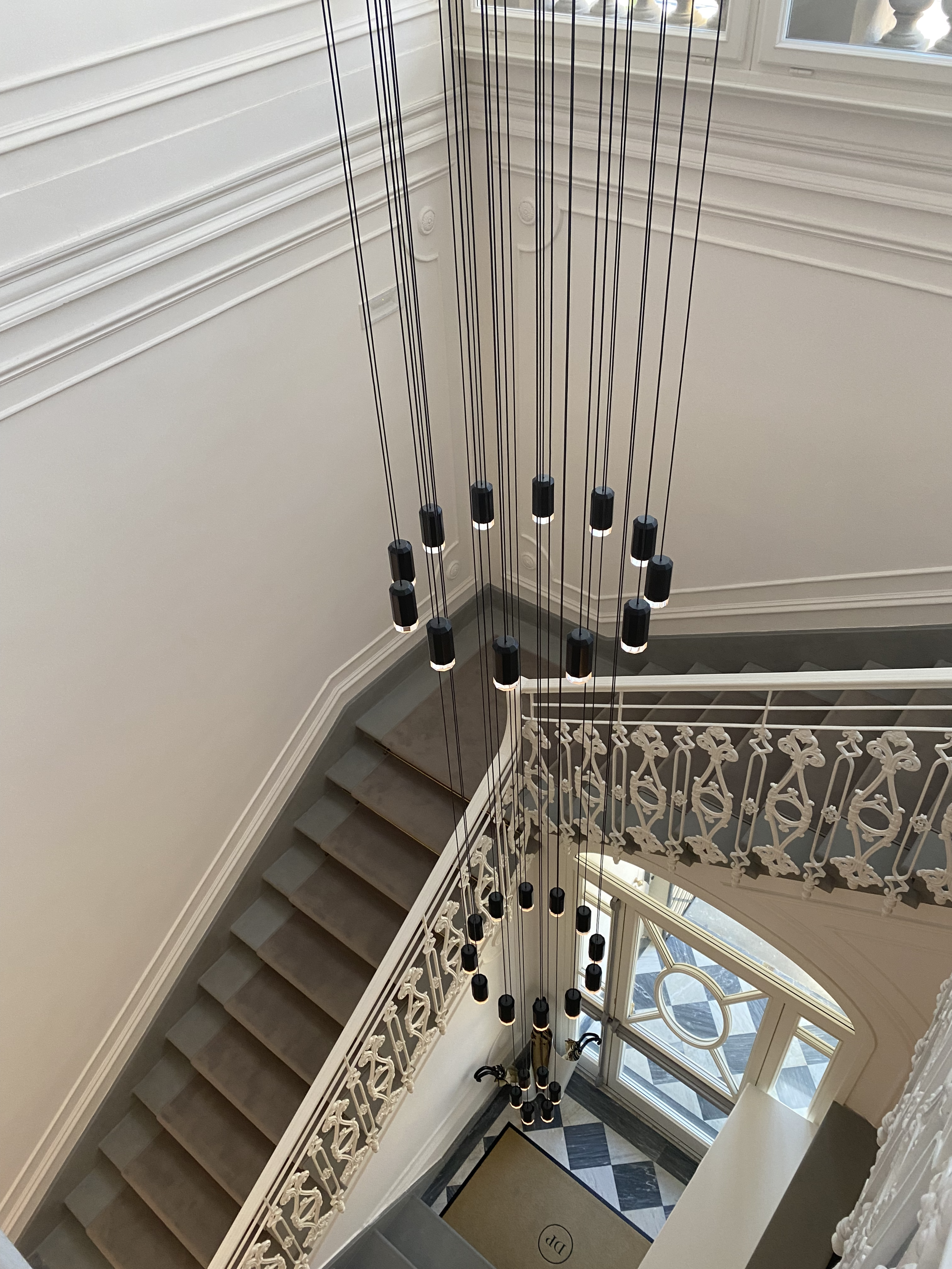
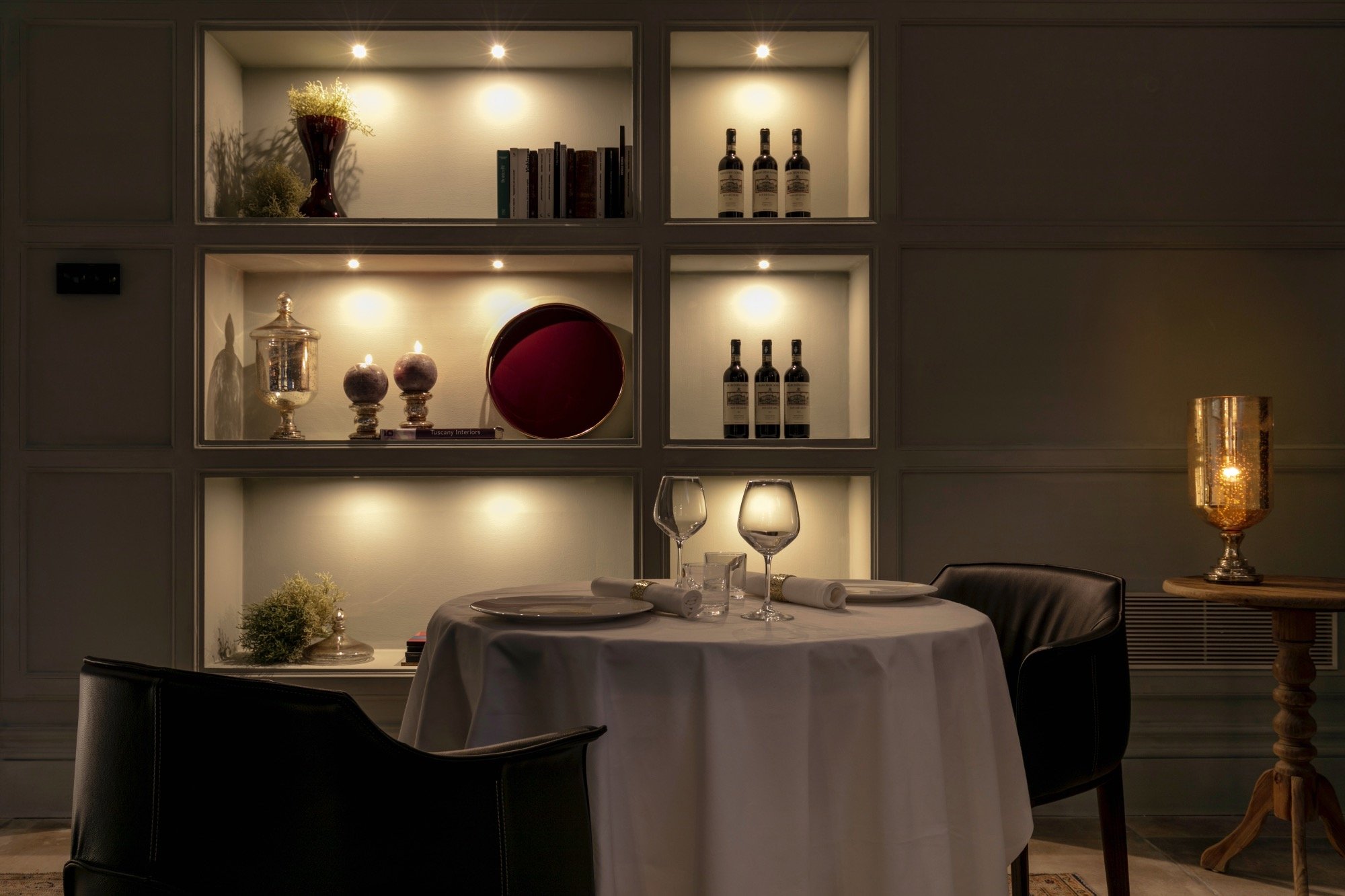
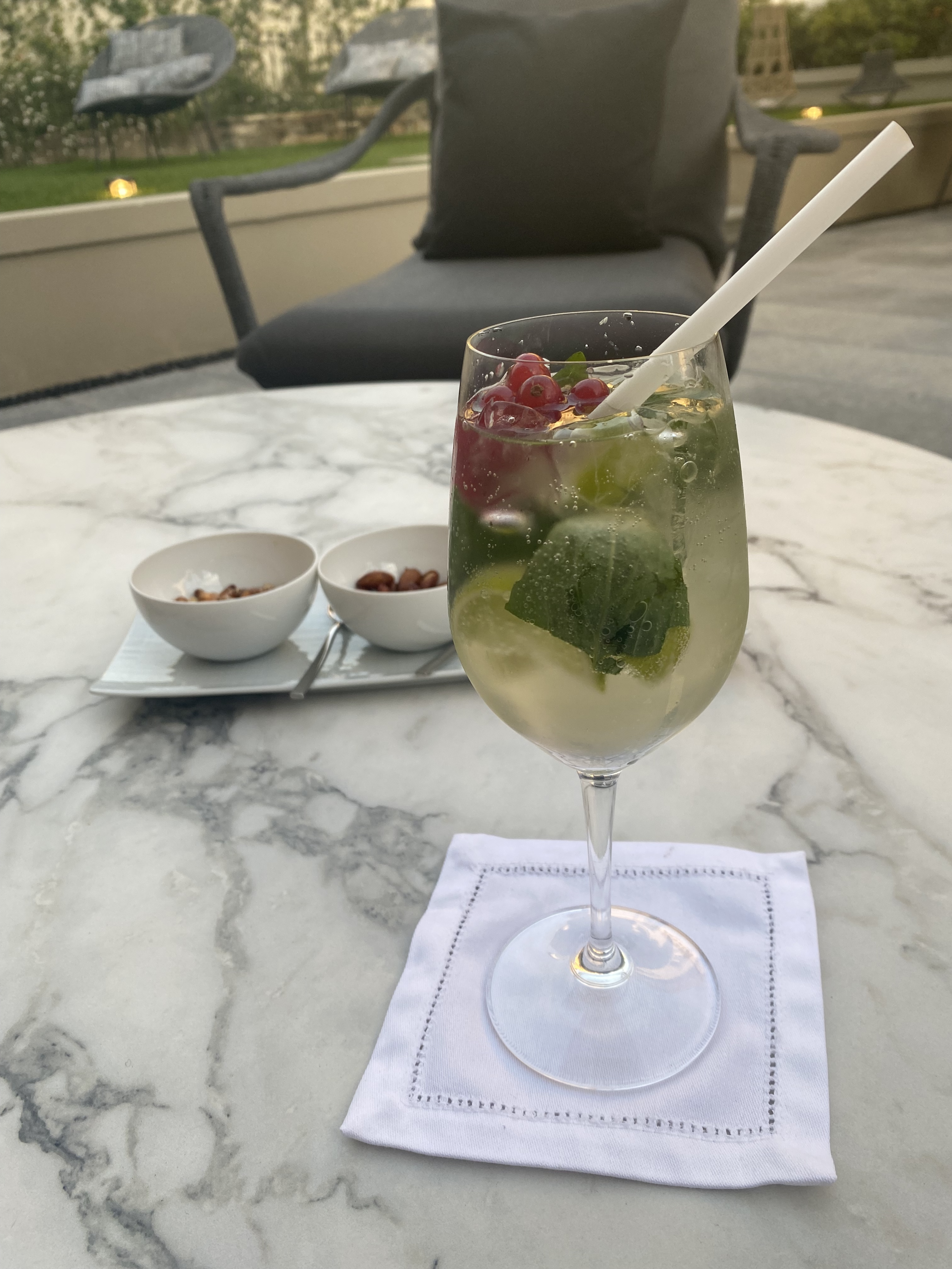
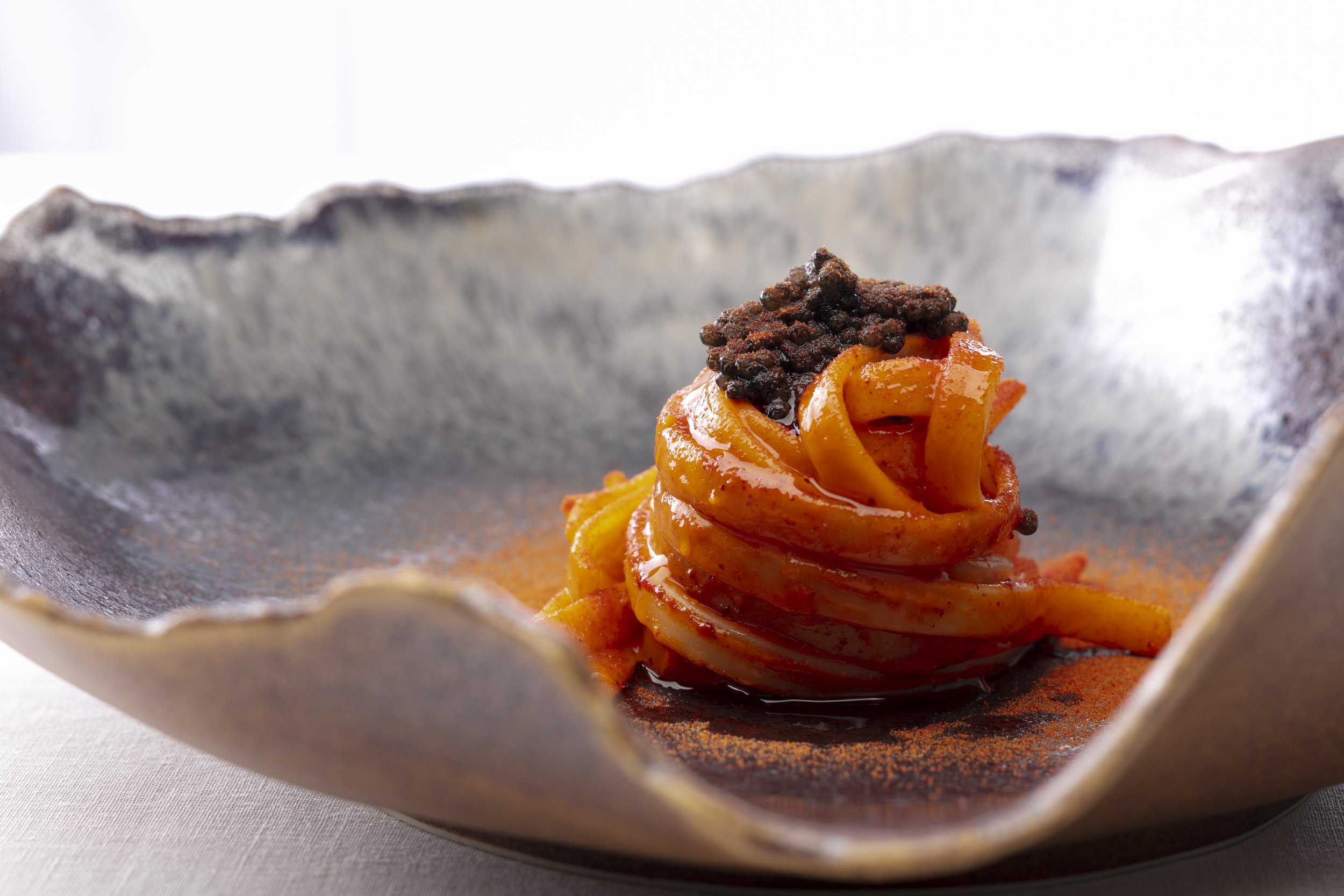
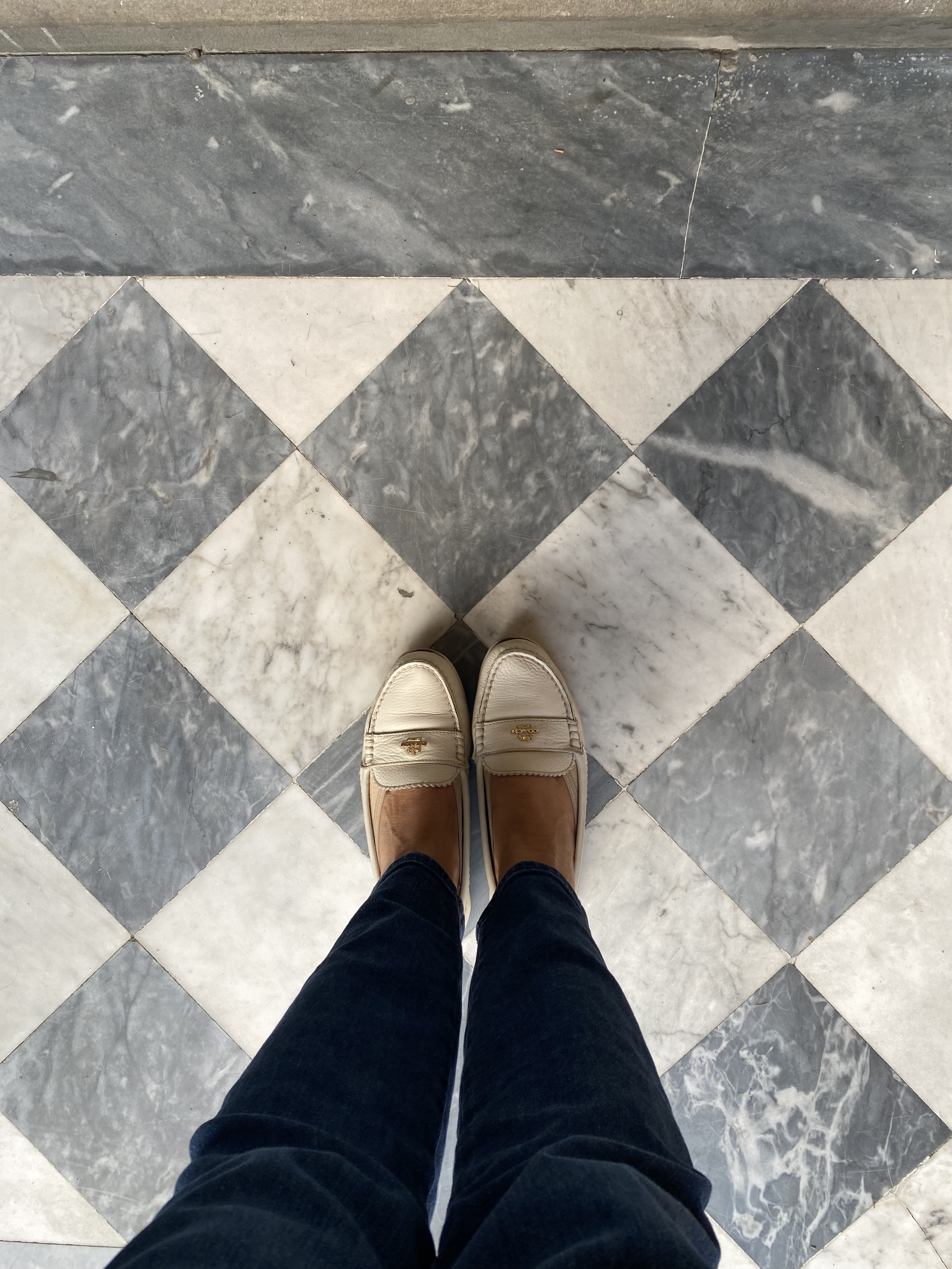
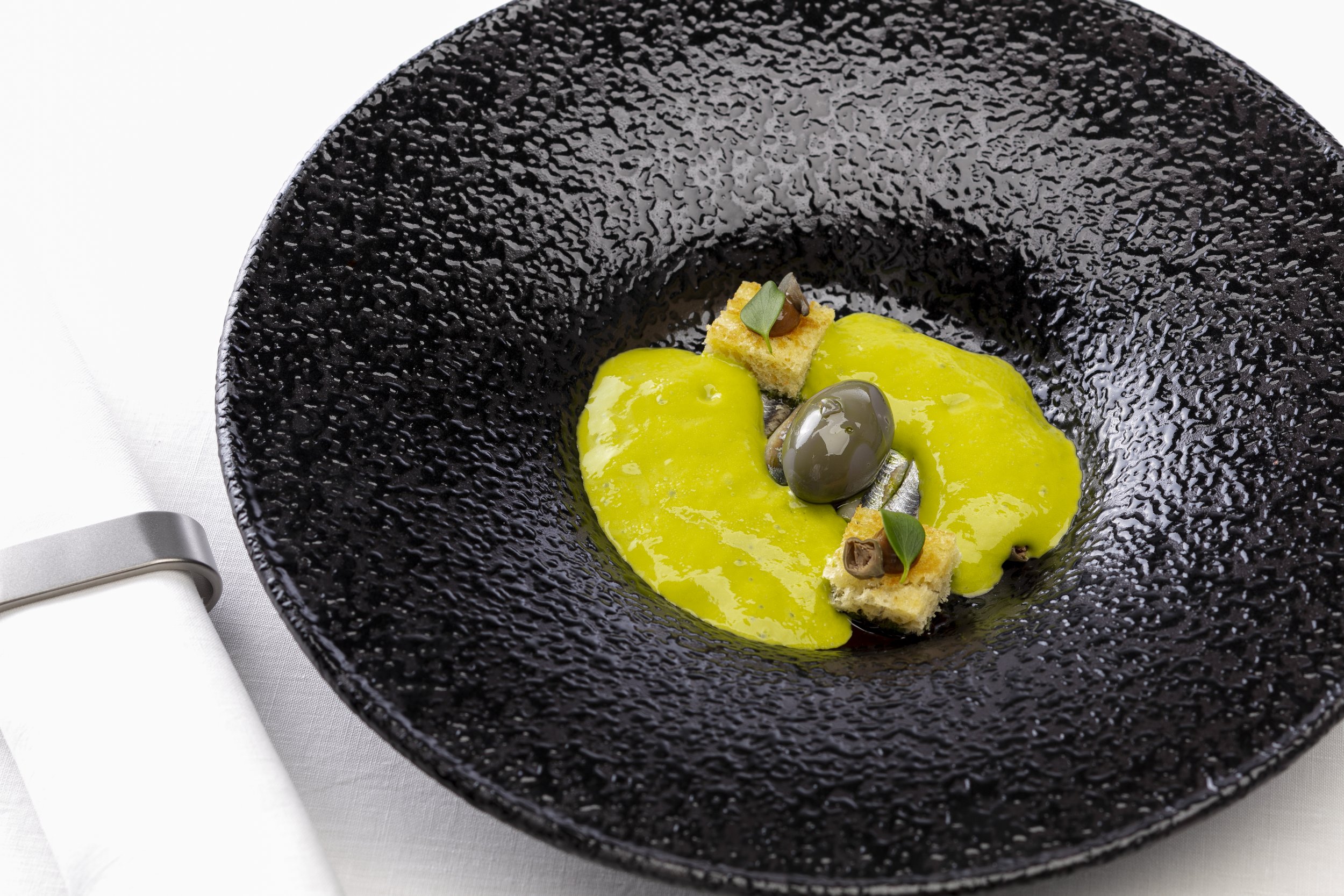
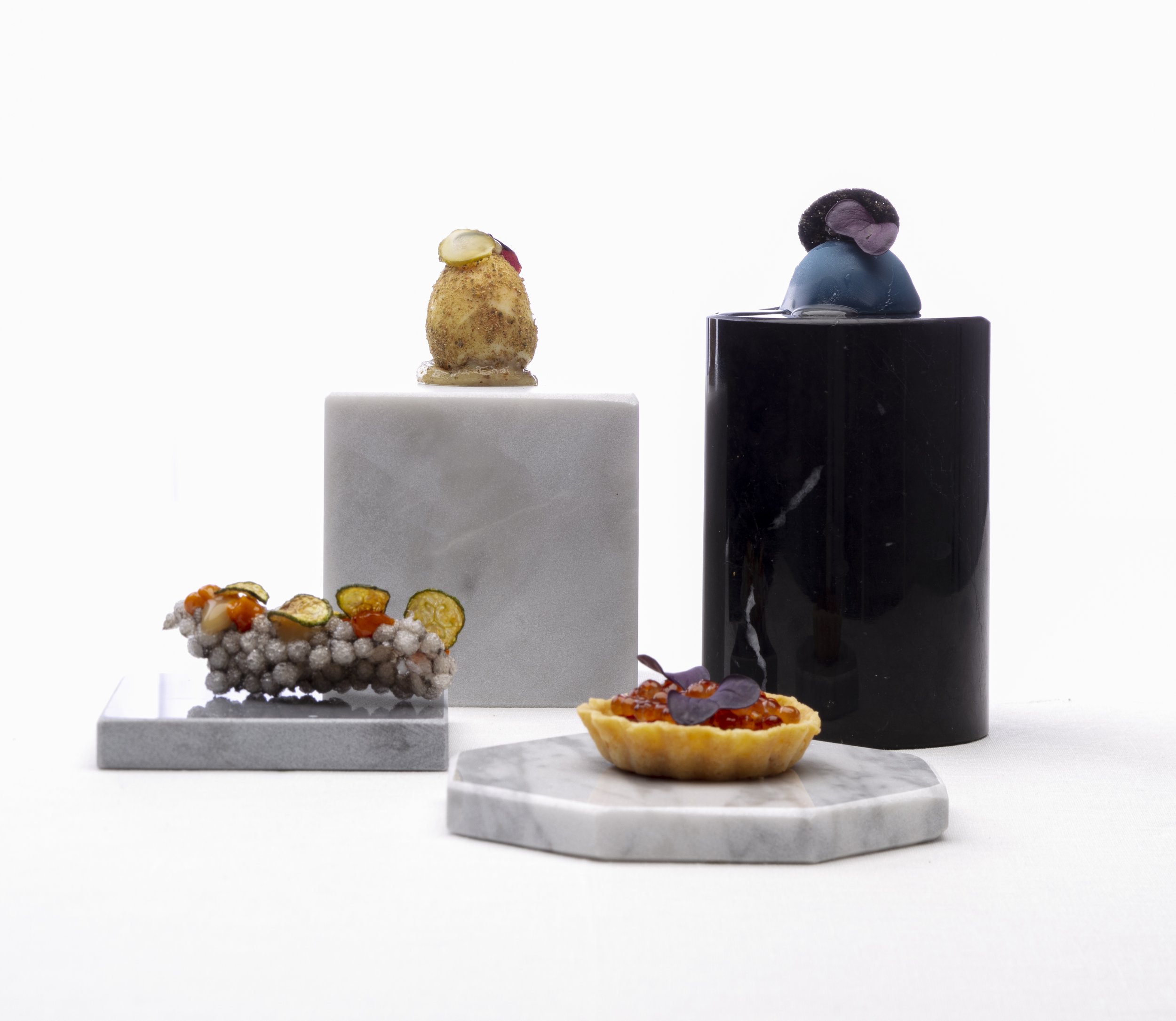
The gastronomic odyssey takes place in an inviting dining room and intimate wine cellar. “It has a Downton Abbey feel, yet celebrates Mediterranean style with perfectly orchestrated interpretations of ancient dishes,” says Kilby.
THE ART OF LIVING WELL
Guests can choose from a collection of art-based activities that pay homage to the city’s incredible Renaissance history, including private viewings of art collections or fashion designers’ ateliers. Viticulturalists can enjoy some of Tuscany’s (and beyond) best with a sommelier who offers intimate wine tasting in the hotel’s private wine cellar. You can also tour local vineyards and do some wine tasting around Florence, as well as take a Tuscan cooking class. All activities are arranged by the helpful staff, who also seamlessly address guest requests and handle the details that assure an enjoyable and stress-free stay—the superior customer service truly is second to none.
This is but a glimpse inside two exceptional hotels, each with its own unique story and journey to its present-day glory. The staggering beauty and charm of the Chianti countryside warrants a whole other article.
Whether you returned to Italy in 2021 or decided to wait until next year when perhaps international travel isn’t quite as daunting, during my glorious 22 days in il bel paese, personally, I couldn’t help but notice a heightened optimism in the air. A renewed joie de vivre and appreciation of all that the country offers was palpable. Italians are definitely living some sort of Renaissance as they emerge bright from a dark period. It happily coincided with my first trip to Florence, and in kind, their Renaissance also became mine. Evviva!
PHOTOS COURTESY OF ANTICA TORRE TORNABUONI, DIMORA PALANCA AND SILVANA LONGO
My Own Personal Renaissance
Sicily & Sardinia: The Real Deal
From No Tourism to Slow Tourism
Savouring authentic, sustainable travel
Remember that classic ‘60s film, If It’s Tuesday, This Must Be Belgium?
It revolved around the whirlwind nature of those dizzying pre-packaged tours of Europe where you would “visit” as many cities and countries as possible without experiencing them in any real way. Checking off an entire bucket list of destinations from a bus window or quick stopover was never my thing. I have always preferred visiting smaller, obscure places and making connections with people who live there, while absorbing local life and culture. Little did I know this made me an early advocate of the Slow Travel movement—an offshoot of the Slow Food movement, which began in Italy with Carlo Petrini in 1986.
World-Wind Tours whisks American tourists to nine countries in 18 days. The era of whistle stops throughout Europe hopefully is behind us. The If It’s Tuesday, This Must Be Belgium cast on the Spanish Steps in Rome.
What is it and why is it important?
Slow Travel emphasizes connection to local people, cultures, food and music. It relies on the idea that a trip is meant to educate and have an immediate and lasting emotional impact, while remaining sustainable for local communities and the environment.
It had been gaining more attention pre-pandemic in response to the hectic, frantic pace of daily life we were all living. Now, after experiencing interminable lockdowns, easing into this kinder, gentler travel resonates with more people, making it a highly popular way to holiday. A relaxed leisurely type of travel over a fast-paced, manic sightseeing schedule—the pandemic reset has prompted most to re-examine how we live in the world, and given this sustainable and meaningful way of travelling its well-deserved moment in the sun.
Along the Sardinian coast. Photo by Nicola Melis
Since I became travel editor at Panoram in 2019, I have wanted to feature this all-important travel trend. However, the pandemic hit and we were in NO TRAVEL territory for some time. In hindsight, the COVID chapter set the stage for what was to come. We ventured out on local road trips and getaways during the pandemic, appreciating what we have in our own backyard. As we resume planning our trips abroad, we realize transatlantic flights are by no means positive acts for the environment. Yet, we truly can minimize our carbon footprint once we get to our destination by changing the way we travel. By seeking a more sustainable type of holiday, we can recharge our batteries away from bustling cities and chain hotels in favour of a longer, leisurely stay in a more rural setting that also supports a local economy.
“Away from the cities: in the old borghi
there is our future.”
”
The appeal of the farmhouse stay in Italy is not new; it is an ever-increasing, desired choice. Imagine combining a remote digital working experience with a holiday in a charming farmhouse in the idyllic Italian countryside—for FREE. It’s not a rural myth. In January of this year, Borgo Office (https://borgo-office.it) launched a free farmhouse stay initiative where guests can buy support packages containing products (food and experiences) from the host’s farm, based on the duration of the stay, no pressure. Sound unfathomable? Out of the 20 regions in Italy, 17 are already participating in this Borgo Office workation initiative, with the bulk of the farmhouses located in Tuscany.
“Presently we have 40 farmhouses and we don’t want to exceed 60, so that we can keep control and have personal and direct relations with all of them,” says Borgo Office project founder, Federico Pisanty. “To qualify for the program, all farmhouses must have a high-quality standard and include powerful wi-fi, printer and scanner and of course, a work area with an incredible view.”
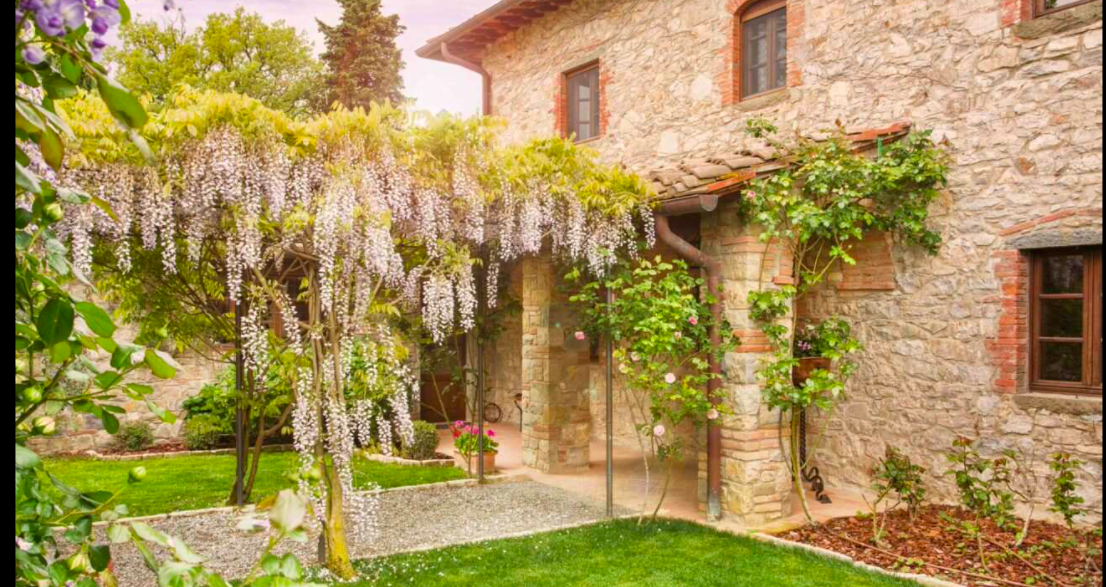

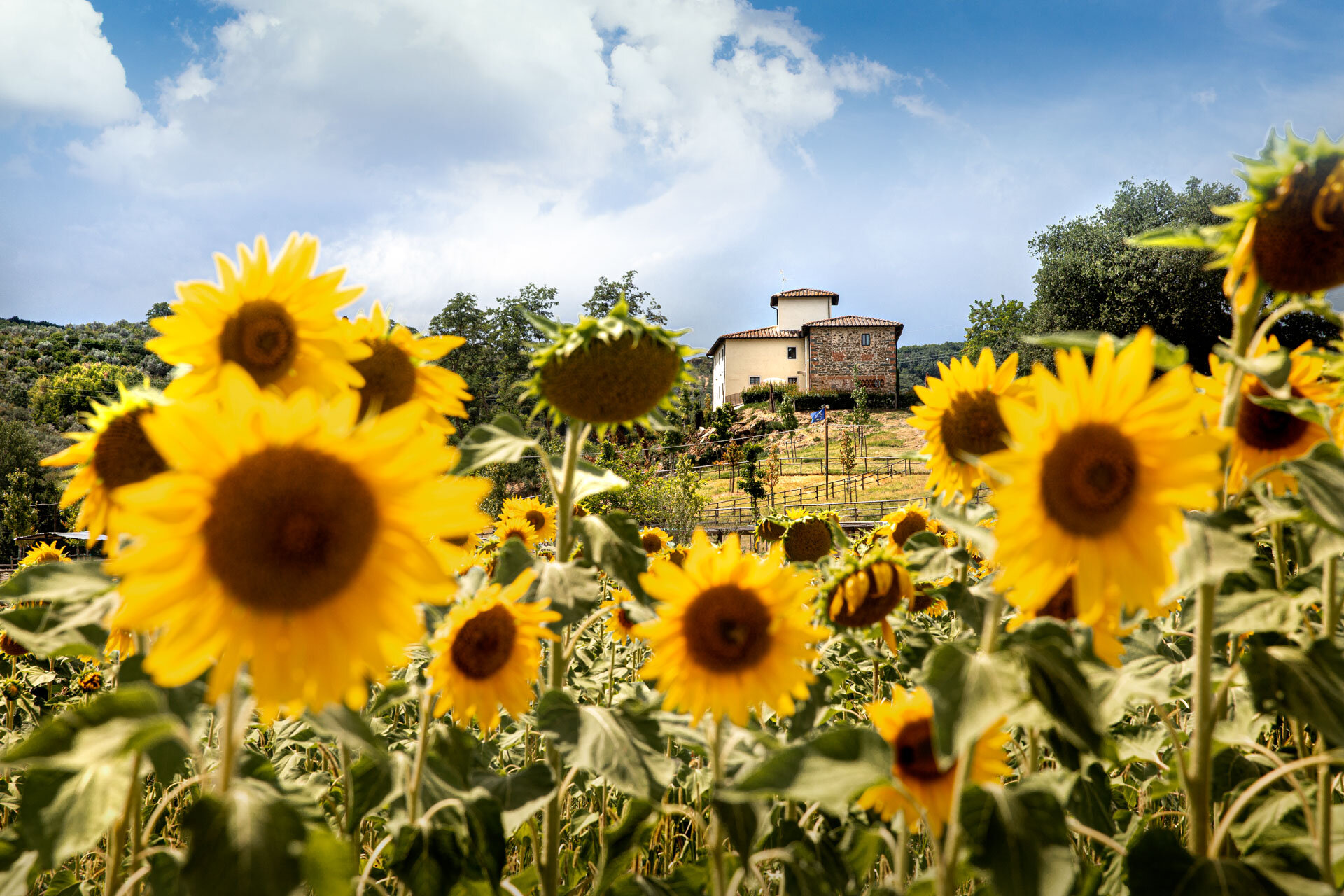

THE KINDNESS BUSINESS MODEL IS HERE
The project is so successful so far, Pisanty is planning to export the business model and welcome farmhouses in other countries to the program. “Our model takes its cue from the ‘Pleasurable Surprises: A Cross-Cultural Study of Consumer Responses to Unexpected Incentives’ research that demonstrates the beneficial effects of surprise on consumer choice.” The findings indicate the element of surprise, combined with delight, pleasure, joy or elation increases both customer loyalty and positive word-of-mouth. “The package purchase requests are multiplying rapidly, and so are the additional incomes for the hosting farmhouses. Our goal is to spread this kind and disruptive model in Italy and abroad, since we are convinced that kindness is the key for a new business era. Furthermore, we want to convince as many farmhouses as possible that the pandemic has demonstrated that, when the hospitality industry faces a crisis, farmhouses must rely on its other line of business—agriculture,” declares Pisanty.
In my next blog post, we visit the islands of Sicily and Sardinia and explore some interesting ways to truly connect with the land and the locals. Sustainable and real, the Slow Travel movement is synonymous with southern Italy.
"Asolando" with Robert Browning
Literary Footsteps
Spellbinding Spello
“The Flowers of Umbria, Part 2”
Where Nature meets Art
Just a 90-minute drive from Castelluccio di Norcia, in the province of Perugia, sits the charming 11th century walled town of Spello. Known for their honey-coloured houses with flower-filled balconies, Spello is built on the lower slopes of Mount Subasio. Interestingly, the pink marble from the mountain used to build the town gives it a rosy hue, especially evident at sunrise and sunset. Thanks to the centuries-old annual tradition of a flower festival that celebrates the Corpus Domini feast, this picture-perfect town has also earned the well-deserved title as the capital of flowers.
Flower-filled streets and pink houses is the perfect prelude to the mastery of floral art this Umbrian town is known for
Fragrant History
The ritual of honouring divinity by throwing flowers or creating flower compositions is a dateless event in many areas of the world. This tradition in Spello, which has gone from originally throwing flowers to then placing them in art forms on the pavement, was first documented in 1831 when painter and then-mayor, Benvenuto Crispoldi, depicted the procession of Corpus Domini in one of his paintings. Called l’Infiorata, it is a custom where groups of infioratori (floral artists) come together to create carpets entirely out of flowers that decorate the procession route. The design concept is always one of religious relevance and, throughout history, there is evidence of how religious devotion is interpreted in the mosaics depending upon the historical and social context. For example, during the Fascist period, la Casa del Fascio appears on a floral carpet in the background. A visit to the Museum of Infiorate located in the Piazza della Repubblica showcases all past floral mosaics where you can see their evolution over time.
A must-visit villa in Spello: Villa Fidelia was built in the 16th century on an ancient Roman sanctuary by the Urbani family. After a few incarnations and different owners over time, the original Roman construction remains enhanced by Baroque gardens, a horse track and park.
The original flower children
In 1962, the flower festival introduced a contest for the best Infiorata, which only amped up the competition among the groups of artists and improved the quality of the compositions.
In 2002, the Association of Le Infiorate of Spello was formed. In less than 20 years, this official group of flower artists has grown to 2,000 members. It boasts 50 groups of artists who create 60 floral carpets for the procession, which takes place on the ninth Sunday after Easter. This year’s date is June 6th.
No Small Feat—The intricacies of paving a procession route with floral art
President of the Association, Mirko di Cola gives us a glimpse inside the year-long process from design to execution.
“Each group of infioratori has a master infioratore who, together with his artists, creates the sketch of a floral painting with a religious theme,” says Di Cola. Once designs are complete, the massive flower picking begins—from fields to greenhouses, fresh or dried—the flowers and leaves have alternating blossoming periods, with spring being the most demanding season. The attention to detail is earnest as Di Cola points out that the same species of flower changes colour once dried, and this allows them to achieve certain nuances in the hues that are intended for the design.
“The sketch is usually printed on multiple sheets of paper and attached together with adhesive tape and then glued to the ground on the Saturday before the Corpus Domini. Many groups, on the other hand, prefer to draw the sketch on the ground with chalk,” says Di Cola. Once the sketches are in place, both locals and tourists partake in filling them with the assigned cut (and sometimes recut) flowers under the direction of the master infioratore.
How many flowers does it take to adorn the two-kilometre procession stretch in the town for that Sunday morning? Somewhere in the 15 million range across 65 varieties.
To protect the elaborate floral tapestries from the elements, a temporary canopy is installed over them, and the flowers are held in place with only water.
A look at the elaborate preparations of the Corpus Domini flower festival in Spello. The Infiorata of 2018 is captured in this video from the Pro Loco of the town.
Momentary Masterpiece
“The Infiorata was born as an ephemeral work,” informs Di Cola. “It begins on the Saturday afternoon and the work lasts throughout the night until 9 a.m. on Sunday morning as the procession takes place after the 10 a.m. mass. This means that the wonder of the Infiorata lasts only a few hours,” says Di Cola. The bishop may be the only person who tramples on the floral painting, but he does not have a role in the choice of the winner of the competition. There is a jury of experts, who on the Sunday morning of the Infiorata observe and analyze all the aspects of the flower carpets and choose the winning tapestries in four different categories. Then on Sunday evening, there is a public award ceremony in which all the infioratori participate and the winners are declared.
NATIONAL & INTERNATIONAL APPEAL
The popularity of the flower festival has grown exponentially over the years and, with it, has elevated the sophistication and quality of the designs. So much so, beyond the Corpus Domini Infiorata, the Association is called upon to compose flower carpets for special occasions to honour religious figures including Pope John Paul ll as well as political figures like Italian Republic presidents. Their work has also been commissioned outside of Italy such as in Lourdes and Bethlehem.
Di Cola confirms that the Infiorata tradition last year was cancelled due to the pandemic, and although the flower festival is back on this year, it has a lot of restrictions in place for 2021. However, once the Corpus Domini flower festival in Spello fully resumes, the town welcomes visitors beyond the Umbrian region to attend. “Tourists, and whoever is curious about the event, are allowed to experience the magical atmosphere of the Infiorata,” assures Di Cola. In fact, over the years people arrive from all over Europe and North America to play a part in preparing for the festival that weekend, always under the supervision of the master infioratori, the Association has carved out an important space to participate in this highly spiritual, artistic and unparalleled experience.
This in-depth look at the flowers of Umbria tell a unique story of a region rich with history, nature, art and tradition, yet the wonders certainly don’t end there, and its beauty transforms throughout the seasons.
I await the day I can see, smell, touch and taste all the flavours of Umbria. It may not be this spring, but with vaccines amping up, I have a good feeling about fall.
For more information on the Infiorata, contact the Association: www.infioratespello.it
THE ANCIENT GATES AND WALLS: Porta Venere is one of six gates that encircle the town of Spello. Originally built in the Augustan age, the "Venus Gate" has three arches, and is composed of white travertine with Doric order pilasters. La Torre Properzio, built during the Medieval period, flanks each side and is made of local pink stone.











